Talent isn’t the only thing that turns heads in the world of sports—sometimes, it’s the chiseled jawlines, perfect smiles, and runway-ready charisma of the athletes themselves. From soccer legends and Olympic champions to courtside heartthrobs and track-and-field Adonises, these 100 men have redefined what it means to be a total package. Whether they’re serving aces or breaking records, they’ve also managed to win the unofficial gold medal in good looks.
100. Carl Lewis – Track & Field, USA
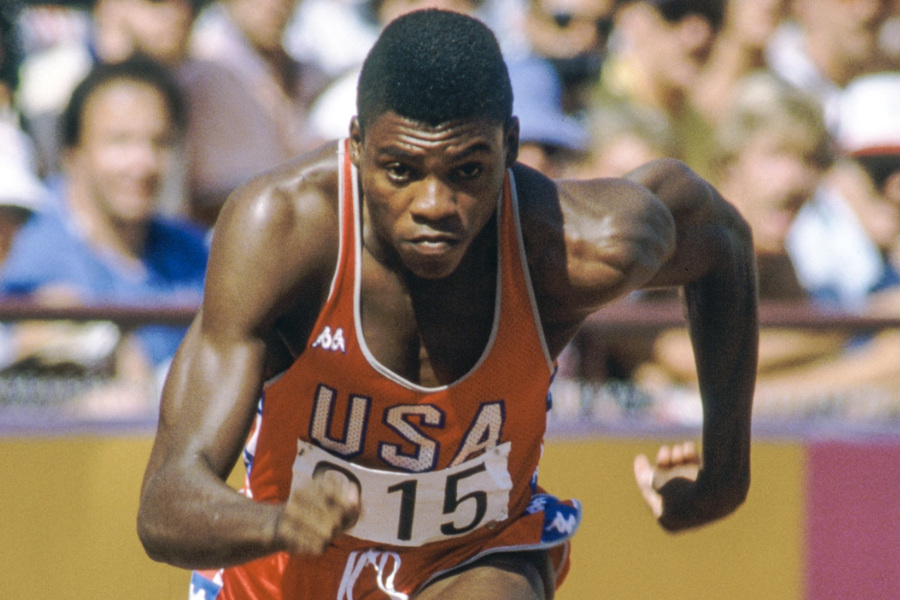
We start our list with Carl Lewis. Lewis dominated global athletics in the ’80s and ’90s, winning nine Olympic gold medals across four Games and revolutionizing long jump and sprinting.
He had striking cheekbones, lean elegance, and a soft-spoken charm that made him equally magnetic in photoshoots, commercials, and red carpet events.
Lewis inspired generations of athletes and fans with his poise and presence. Even in retirement, his legacy of grace and greatness remains nearly impossible to top.
99. Diego Forlán – Soccer, Uruguay

Diego Forlán became a global sensation at the 2010 World Cup, winning the Golden Ball and guiding Uruguay to its best performance in decades.
With tousled blonde hair, strong features, and a sun-kissed glow, he became a global sex symbol and football ambassador.
His career spanned elite clubs in Spain, Argentina, and Japan, but his laid-back style and gentlemanly image left an even bigger impression.
98. Tom Daley – Diving, United Kingdom

Tom Daley burst into international fame as a teenage Olympian, later clinching gold in Tokyo 2020 after earlier bronze medals in 2012 and 2016.
Known for his expressive face and symmetrical features, Tom grew from adorable teen to suave, stylish public figure admired around the world.
He’s also a proud LGBTQ+ advocate, fashion icon, and knitting entrepreneur—proving charm, athleticism, and authenticity are the ultimate triple threat.
97. Tony Hawk – Skateboarding, USA
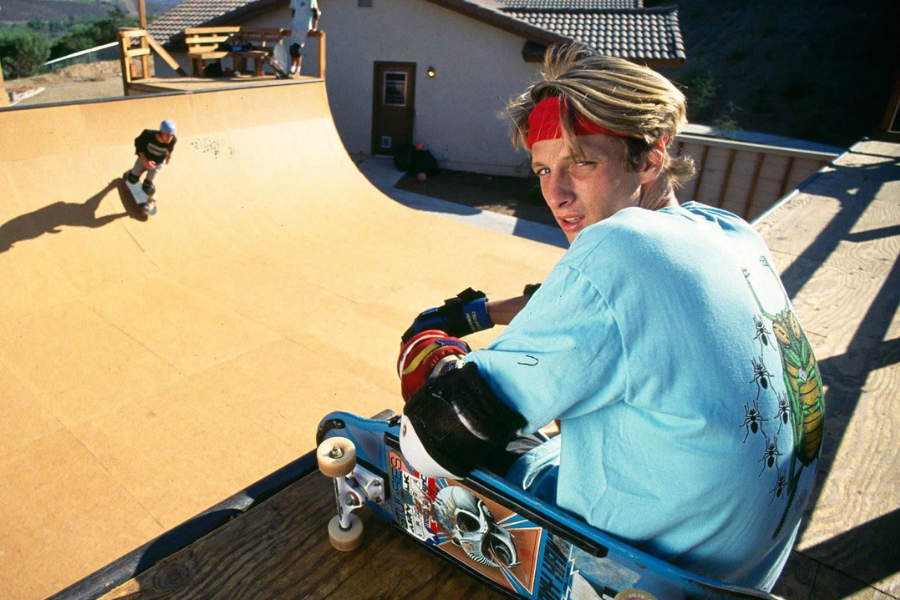
Hawk became the face of skateboarding in the ‘90s and 2000s, landing the first-ever 900 and turning his name into an action sports empire.
With sun-kissed skin, boyish charm, and a lanky-cool frame, Tony had a laid-back charisma that resonated across generations and cultures.
From X Games legend to video game icon, Hawk’s timeless good looks and gentle, humble presence made him skateboarding’s original—and most enduring—heartthrob.
96. Richie Mo’unga – Rugby, New Zealand

Mo’unga starred for the Crusaders and the All Blacks, earning a reputation as one of the most creative, composed, and technically gifted fly-halves of his generation.
With velvety brown eyes, a calm intensity, and a glowing complexion, Richie carries himself with soft-spoken charm and the effortless cool of a natural leader.
Whether commanding the field or stepping off it in understated style, Mo’unga brings quiet elegance and deep charisma—rugby’s ultimate gentleman glow-up.
95. Michael Phelps – Swimming, USA
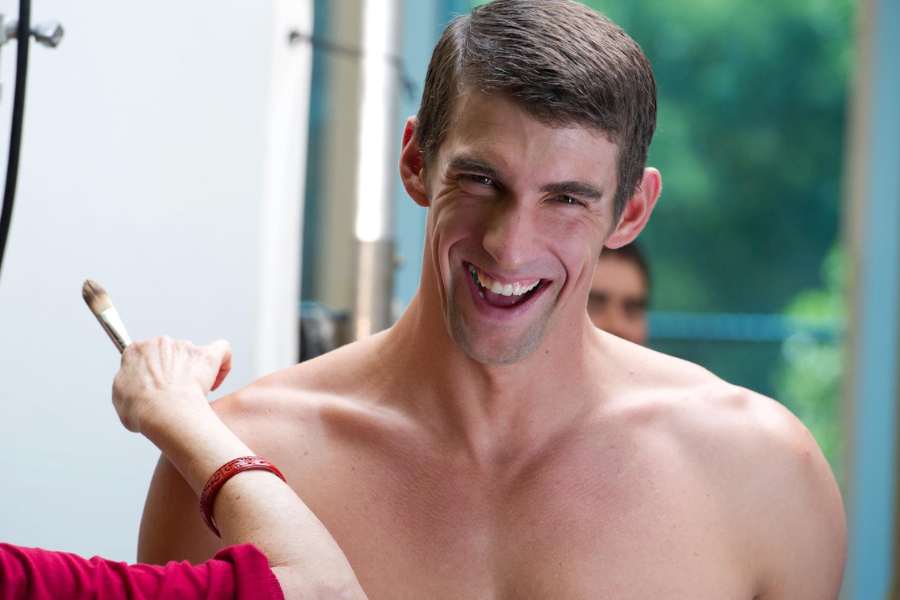
The most decorated Olympian ever, Phelps won 23 gold medals with unmatched dominance in freestyle, butterfly, and medley events.
His long torso, clean profile, and humble aura turned him into a global icon, gracing cereal boxes and red carpets.
Phelps proves that peak athleticism and everyday charm can coexist—he’s golden inside and out, medal count aside.
94. Hidetoshi Nakata – Soccer, Japan
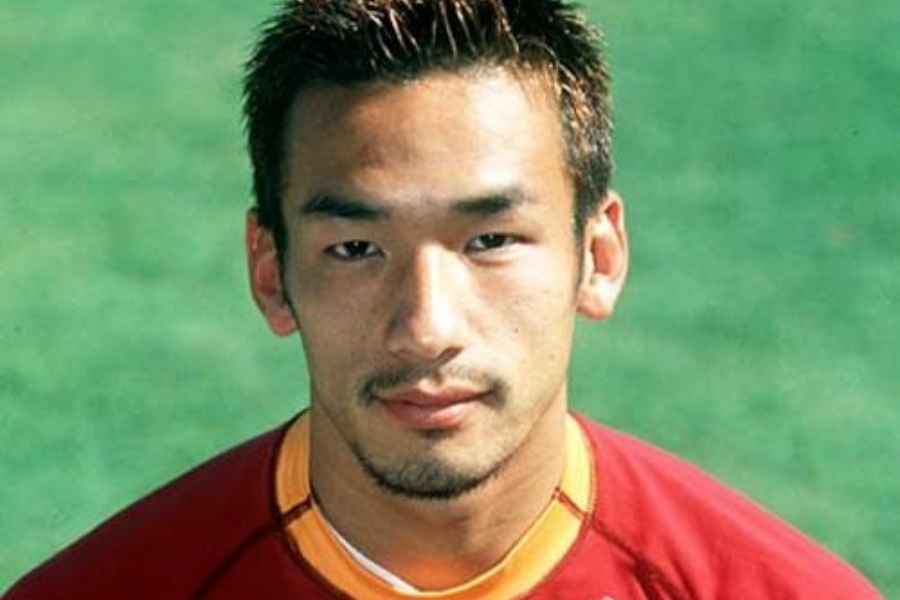
Often called Japan’s David Beckham, Nakata helped revolutionize Asian football, starred in Europe’s top leagues, and played in three World Cups.
His sharp jawline, bold fashion, and edgy charisma made him a natural for magazine covers and luxury brand campaigns worldwide.
After retiring young, Nakata explored art, wine, and fashion—maintaining a global presence that proves his elegance was never limited to a football pitch.
93. Jake Arrieta – Baseball, USA

Arrieta won the 2015 Cy Young Award and helped lead the Chicago Cubs to their historic 2016 World Series title, dominating hitters with late-career brilliance.
With intense hazel eyes, rugged features, and a famously majestic beard, he looked like a blend of Greek statue and outdoor survivalist.
Arrieta’s no-nonsense aura, muscular frame, and piercing stare made him a rare blend of old-school masculinity and polished, picture-perfect baseball charisma.
92. Stephen Curry – Basketball, USA

Curry revolutionized the NBA with his limitless shooting range, fluid ball-handling, and four championship rings as the leader of the Golden State Warriors dynasty.
With golden-brown eyes, flawless skin, and a radiant smile, Steph exudes approachable charm and natural warmth that make him beloved far beyond basketball.
Equal parts family man, fashion icon, and MVP, Curry is the definition of modern-day handsome—effortless, joyful, and quietly magnetic in every arena he enters.
91. Jenson Button – Formula 1, United Kingdom
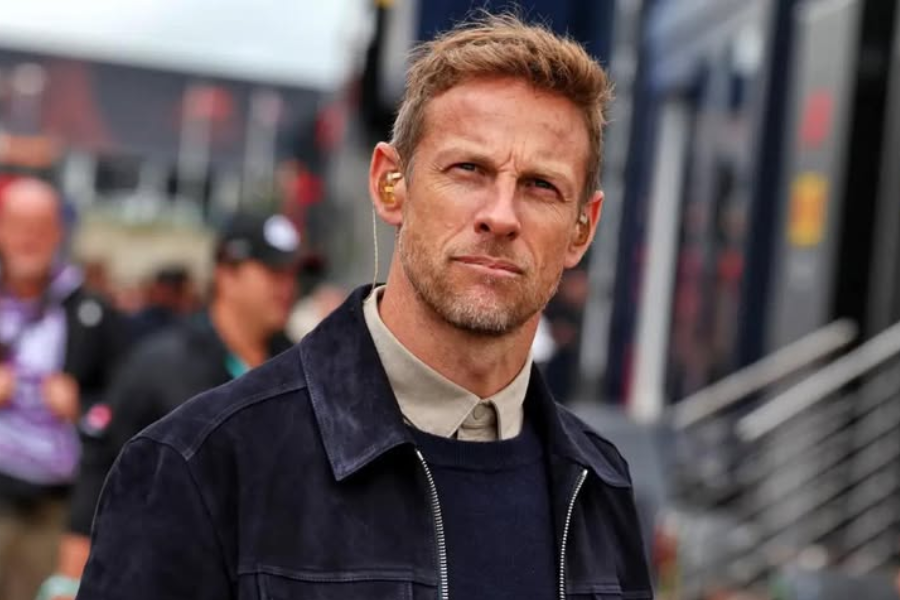
Jenson Button won the 2009 Formula 1 World Championship with Brawn GP, showcasing smooth driving, intelligence, and unmatched consistency across multiple racing seasons.
He brought GQ-level looks to the track with his laid-back surfer vibe, scruffy charm, and ever-confident eyes behind the wheel.
A frequent in fashion shoots and paddock glamour, Jenson helped elevate F1 into a lifestyle, blending motorsport excellence with effortless British elegance.
90. Jordy Smith – Surfing, South Africa
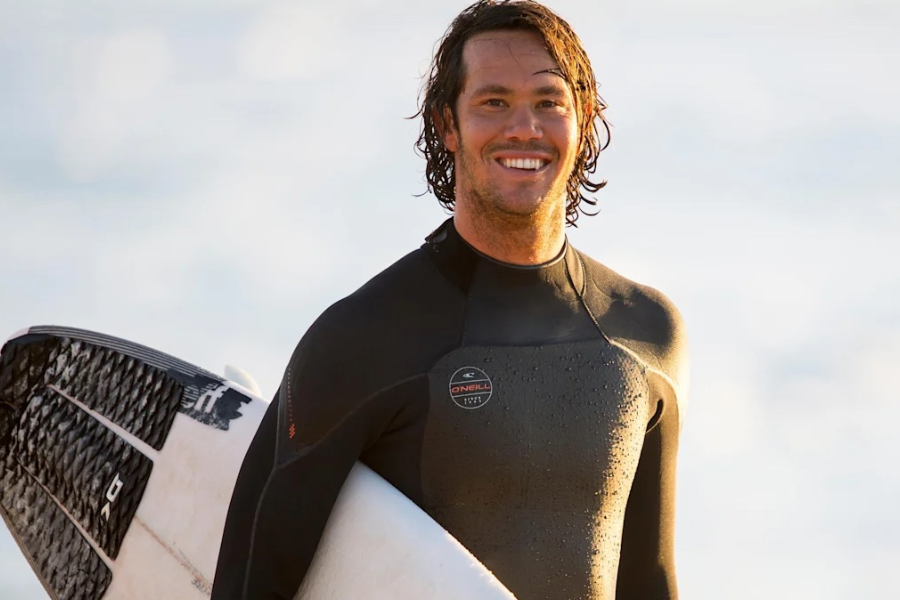
At 90, we have Jordy Smith. Smith rose through the WSL rankings with explosive surfing talent and a charismatic presence, finishing runner-up in the world twice.
His broad shoulders, sea-weathered tan, and easygoing smile embodied the perfect beachside heartthrob—riding waves and breaking hearts from Durban to Hawaii.
Smith remains a global surf ambassador, admired not just for his power and control but for his magnetic, windswept surfer-boy aesthetic.
89. Teddy Riner – Judo, France

A 10-time world champion and three-time Olympic medalist, Riner is a towering force in judo, blending technical brilliance with unmatched dominance in heavyweight competition.
With regal posture, deep brown eyes, and a powerful yet gentle presence, Teddy radiates quiet strength and commanding elegance in every appearance.
Off the tatami, his style, smile, and natural charisma make him not just a national treasure—but a global ambassador of beauty in motion.
88. Apolo Ohno – Speed Skating, USA
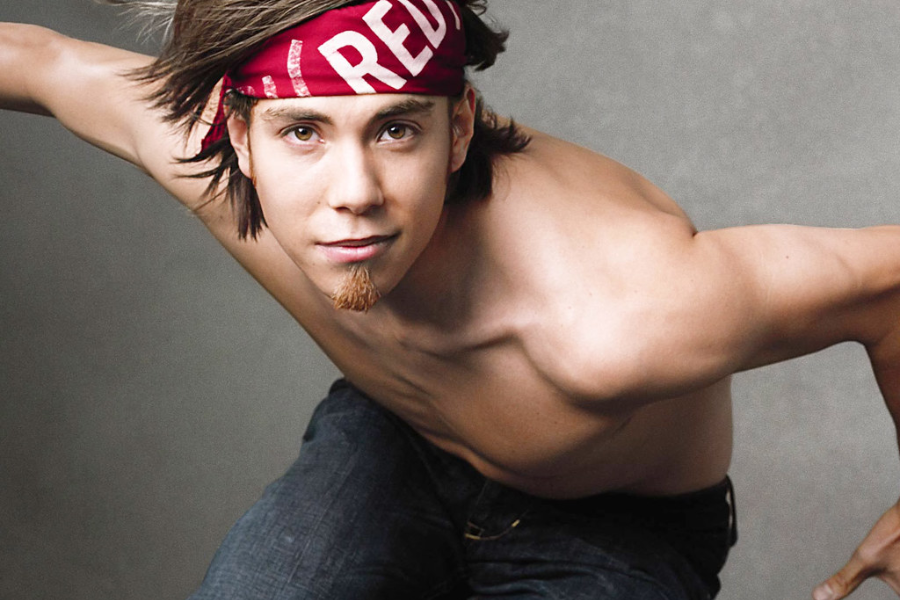
Apolo Anton Ohno is the most decorated American Winter Olympian, winning eight medals and becoming the face of U.S. short track speed skating.
With his signature soul patch, piercing eyes, and compact build, Apolo balanced fiery athleticism with a mysteriously cool charisma.
His post-skating career included TV, fitness, and philanthropy—proof that his magnetic energy and movie-star looks weren’t just limited to the ice.
87. Alessandro Del Piero – Soccer, Italy
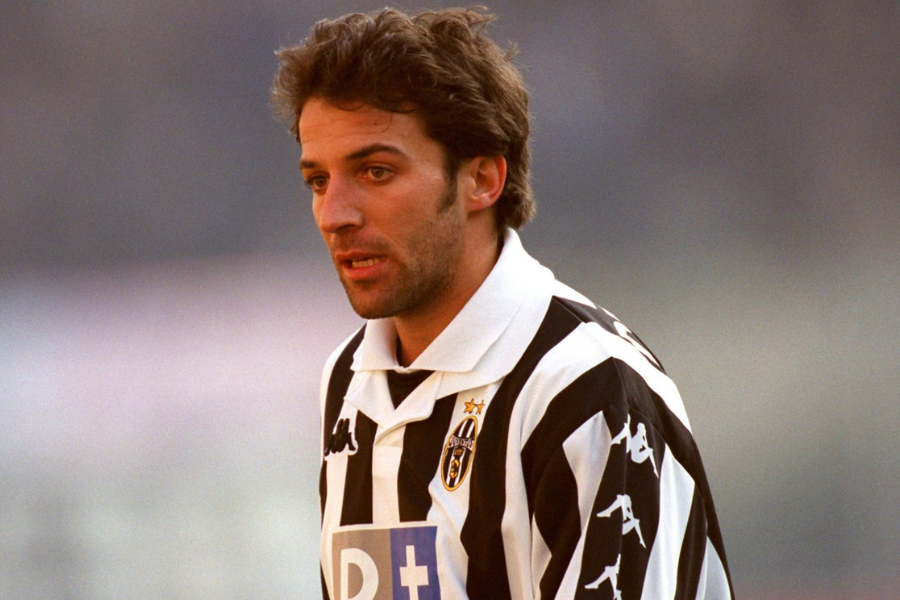
Del Piero led Juventus for nearly two decades, winning six Serie A titles and a World Cup with Italy in 2006—an icon of consistency and class.
With dreamy eyes, a thoughtful smile, and timeless European charm, he was adored by fans and fashion editors alike.
He brought a gentleman’s aura to every match, pairing sharp footballing intelligence with graceful presence and a style that transcended sport.
86. Shaun White – Snowboarding, USA
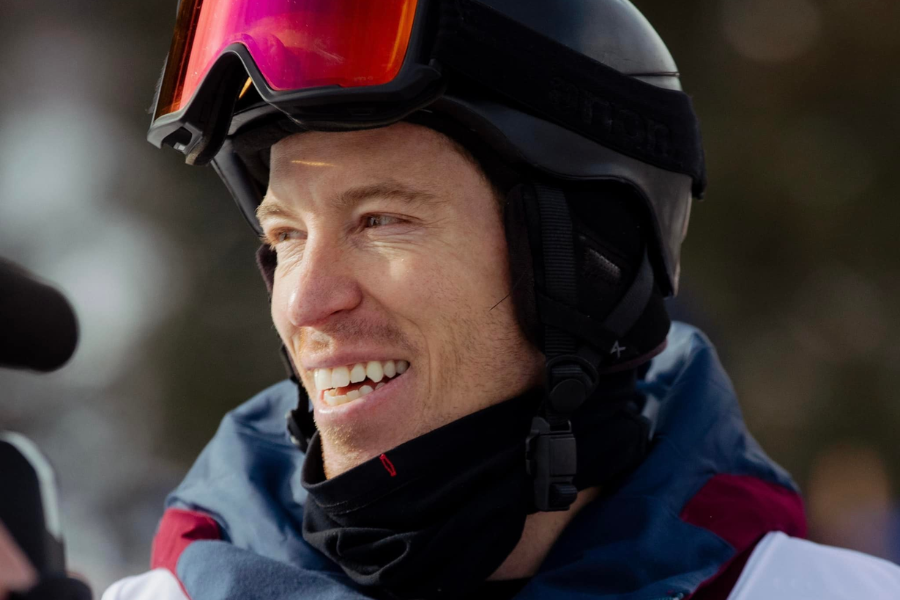
A three-time Olympic gold medalist, Shaun White revolutionized snowboarding with gravity-defying tricks, rockstar energy, and decades of X Games dominance.
His rebellious charm, long red hair, and skater-boy vibe made him an instant icon among fans and media during his prime.
White extended his brand into fashion, music, and business, always keeping that unique blend of cool confidence and California edge.
85. Andy Roddick – Tennis, USA
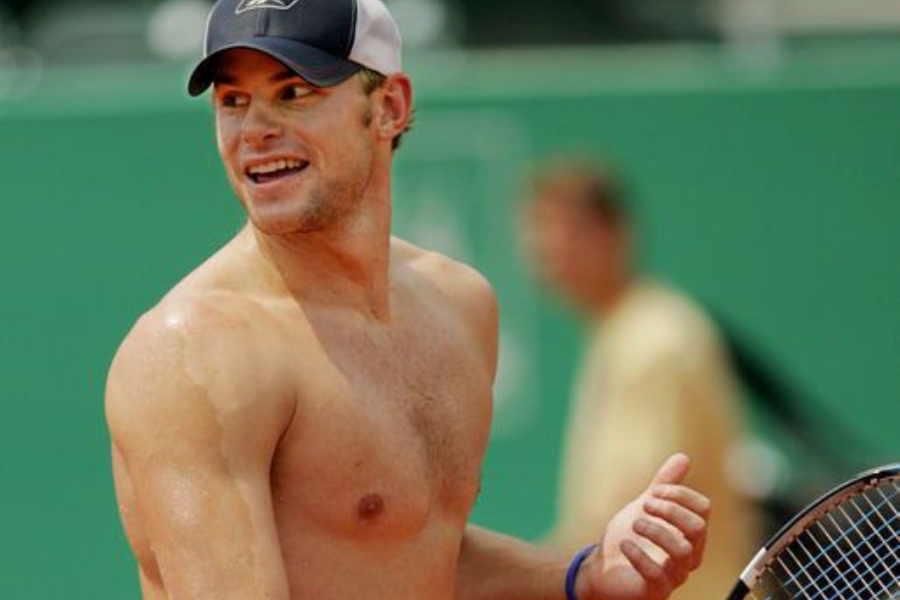
A former world number one and U.S. Open champion, Roddick defined American tennis post-Sampras, with power serves and a razor-sharp wit.
His boyish good looks, rugged stubble, and signature backward cap earned him magazine covers, fan crushes, and endorsement gold.
Whether diving for volleys or making talk show appearances, Roddick’s mix of sarcasm and sex appeal made him a 2000s sports icon.
84. Grigor Dimitrov – Tennis, Bulgaria

Often compared to Federer in style, Dimitrov carved out his own path with ATP titles and a fanbase drawn to his fluid game and polished appearance.
Tall, athletic, and immaculately styled, Grigor is tennis’s ultimate gentleman-crush—bringing fashion-forward energy to center court.
He’s as likely to win a rally as he is a GQ cover shoot, with old-school charm and modern looks.
83. Victor Cruz – Football, USA
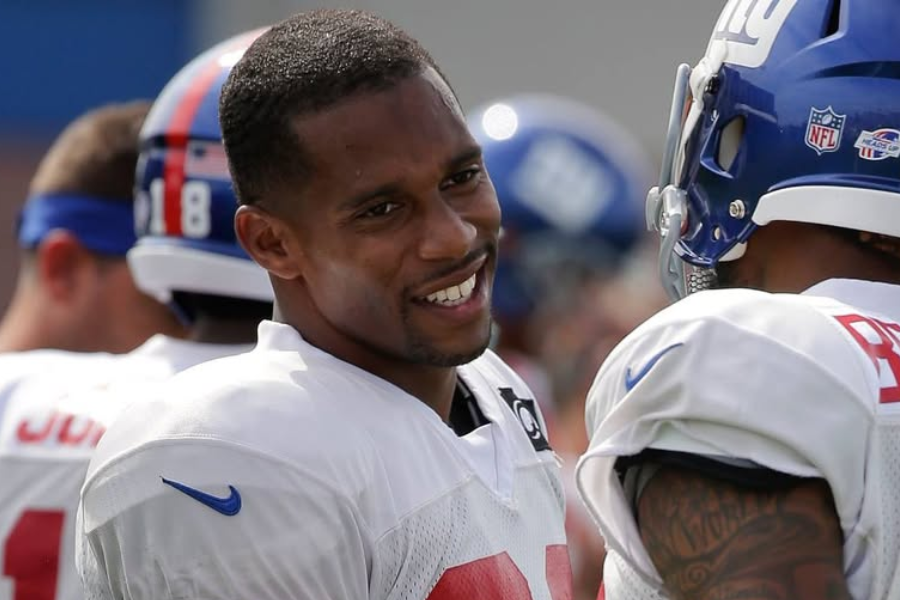
Victor Cruz brought excitement and salsa flair to the NFL, becoming a Super Bowl champion and one of the league’s most beloved wide receivers.
His megawatt smile, classic bone structure, and off-field swag helped him leap from athlete to cultural icon.
Now a broadcaster and fashion ambassador, Cruz proves charm and style can score just as many points as touchdowns.
82. Julian Edelman – Football, USA
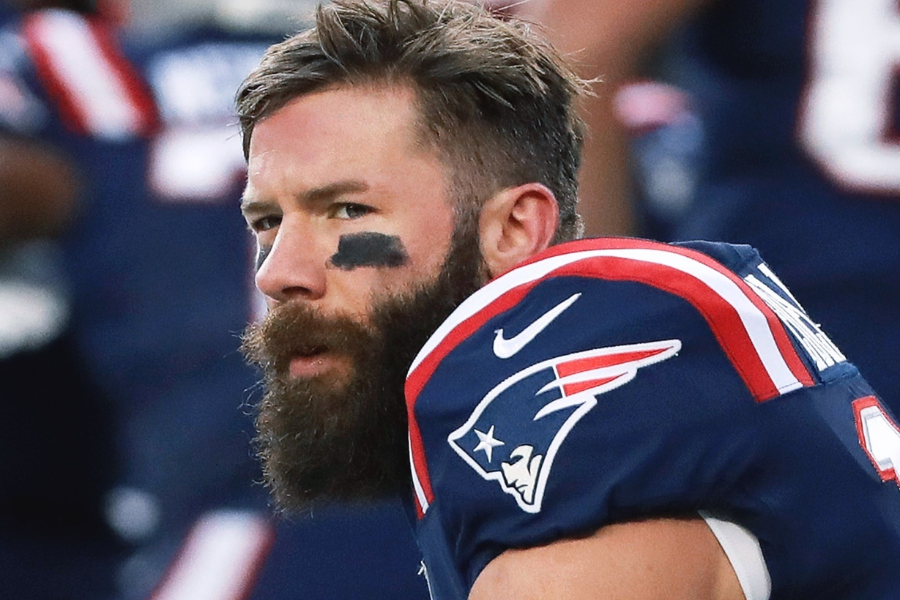
A Super Bowl MVP and three-time champion with the New England Patriots, Edelman became one of the NFL’s most clutch playoff performers and beloved underdog stories.
With rugged good looks, a perfectly groomed beard, and piercing green eyes, he brought Hollywood energy to the gridiron with every catch and postgame smirk.
Off the field, his playful charisma, casual swagger, and smoldering stare turned him into a lifestyle icon—equal parts wide receiver and walking thirst trap.
81. Noah Lyles – Track & Field, USA

A World and Olympic champion in the 100m, Lyles is one of the fastest men alive, known for his explosive acceleration and electric personality.
With sculpted features, expressive eyes, and a vibrant, confident aura, he’s a track star who looks like he was born to be in the spotlight.
Whether flexing on the finish line or styling in front-row fashion seats, Lyles brings bold, modern charisma—and elite-level handsomeness—to every arena he enters.
80. Ryan Murphy – Swimming, USA

Coming up at number 80, we have Ryan Murphy. A backstroke specialist and Olympic gold medalist, Murphy has dominated global swimming since Rio 2016, setting world records and anchoring Team USA in high-stakes relays.
With boy-next-door charm, perfect posture, and dreamy blue eyes, he brings polished elegance to the pool deck and post-race podium alike.
Whether breaking records or flashing that all-American smile, Murphy blends classic swimmer physique with clean-cut charisma—fresh-faced, focused, and effortlessly attractive in every frame.
79. Usain Bolt – Track & Field, Jamaica

An eight-time Olympic gold medalist, Bolt shattered world records in the 100m and 200m, becoming the fastest human in history and a global sports icon.
With towering height, sculpted frame, and a megawatt smile, Bolt combined unmatched athletic power with radiant, playful charisma that transcended the track.
Whether striking his signature pose or lighting up interviews with charm and laughter, Bolt was equal parts legend and lovable heartthrob—lightning in a perfectly built body.
78. Pete Sampras – Tennis, USA

Sampras dominated tennis in the 1990s, winning 14 Grand Slam titles and holding the world No. 1 spot for six consecutive year-end rankings—a true hardcourt king.
In his prime, Pete had soulful eyes, thick brows, and a clean-cut, all-American look that felt like it was pulled from a Ralph Lauren catalog.
His quiet confidence, natural grace, and boy-next-door charm gave him a romantic aura—less flashy than others, but timelessly handsome in that golden-era heartthrob way.
77. Joe Burrow – Football, USA
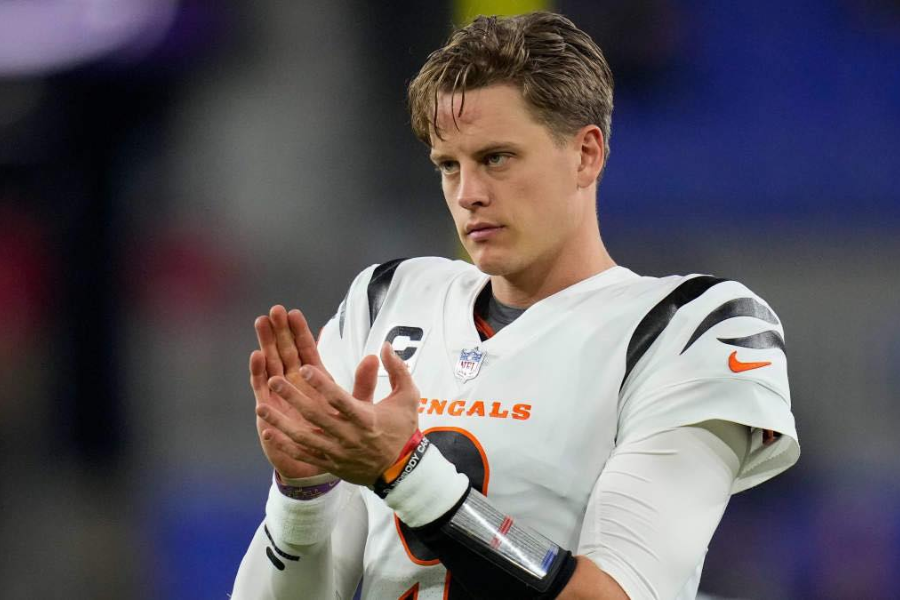
Burrow rocketed to fame after winning the Heisman and leading LSU to a national title, then reviving the Bengals as an NFL superstar.
With steely blue eyes, confident swagger, and modern bad-boy style, he’s football’s new fashion-forward QB poster child.
Burrow’s unbothered confidence, dry wit, and off-field drip make him the millennial athlete dream package—killer on the field, smooth everywhere else.
76. Thibaud Flament – Rugby, France
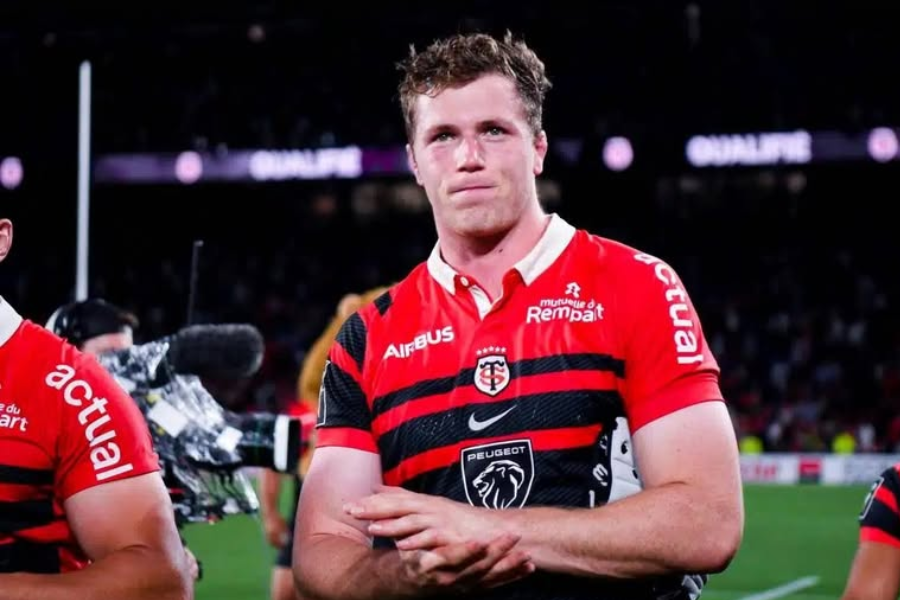
A rising star for France, Flament combines towering presence with agility and intelligence as a modern lock with a dynamic edge.
With high cheekbones, tousled blond hair, and that French model energy, he carries a boyish, clean-cut handsomeness with effortless sophistication.
Whether in national team colors or streetwear, Flament brings a blend of elegance and confidence that makes him impossible to miss—and hard to forget.
75. Dominic Thiem – Tennis, Austria

Thiem claimed his first Grand Slam at the 2020 US Open, becoming Austria’s top player since Thomas Muster and a consistent top-five force on tour.
His quiet intensity, striking bone structure, and athletic grace made him a natural heartthrob with an edge of thoughtful charm.
Whether crushing backhands or modeling Hugo Boss suits, Thiem brings a brooding elegance that bridges sport and style effortlessly.
74. Patrick Mahomes – Football, USA

Mahomes redefined the quarterback position with his rocket arm, creativity, and calm under pressure—earning multiple MVPs and Super Bowl titles with the Kansas City Chiefs.
With glowing skin, golden-brown curls, and a megawatt smile, he brings a youthful, modern swagger that makes him stand out both on and off the field.
Whether slinging touchdowns or sitting front row at NBA games, Mahomes balances flashy talent with humble charm—football’s golden face for a new generation.
73. Dan Carter – Rugby, New Zealand
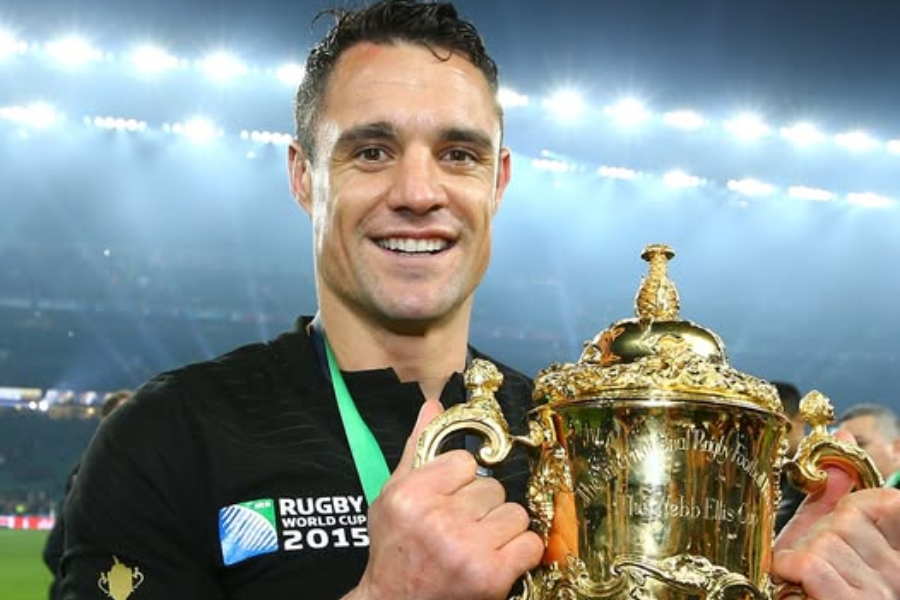
Often regarded as the greatest fly-half ever, Dan Carter led the All Blacks to two Rugby World Cup victories and rewrote scoring records worldwide.
With clean-cut features and piercing blue eyes, Carter had the calm, rugged beauty of a Kiwi action hero.
He modeled for luxury brands and graced magazine covers, pairing All Black toughness with smooth, understated sex appeal.
72. Braxton Berrios – Football, USA

A wide receiver and return specialist, Berrios has made a name for himself in the NFL with speed, sharp routes, and standout special teams performances.
With sharp green eyes, defined features, and a fitness model build, he’s become just as famous for his looks as for his highlight reels.
From NFL tunnels to fashion campaigns and public romances, Berrios brings glossy-magazine charm to every game—and every scroll-stopping Instagram post.
71. Arthur Nory – Artistic Gymnastics, Brazil

Nory won bronze on floor at the Rio 2016 Olympics, combining strength, agility, and charisma to become one of Brazil’s most beloved modern athletes.
With dazzling hazel eyes, a flawless smile, and a model’s physique, he bridges gymnast grace and celebrity charm effortlessly.
Open, expressive, and photogenic from every angle, Nory radiates joy and warmth—an Olympic-level heartthrob with magnetic energy on and off the mat.
70. Nicolò Martinenghi – Swimming, Italy

At 70, we have the iconic Nicolo Martinenghi. Martinenghi burst onto the international scene with an Olympic bronze in the 100m breaststroke at Tokyo 2020 and followed it with world and European medals.
With a sculpted physique, defined jawline, and classic Italian features, he brings Mediterranean allure to the pool deck like a modern-day Roman gladiator.
On the blocks or in a tailored suit, Nicolò combines strength, style, and smoldering intensity—Italy’s aquatic heartthrob making waves with every stroke and stare.
69. Andriy Shevchenko – Soccer, Ukraine

Shevchenko won the Ballon d’Or in 2004 and starred for AC Milan and Chelsea with lethal finishing, sharp movement, and poise under pressure.
His icy blue eyes, sharp cheekbones, and cool demeanor made him a global fashion icon and adored national hero.
After retiring, he entered politics and coaching—always keeping that timeless Slavic elegance and soccer god status intact.
68. Max Verstappen – Formula 1, Netherlands

Verstappen became the youngest driver to debut in Formula 1 and quickly transformed into a three-time World Champion with Red Bull’s dominant racing machine.
With icy blue eyes, sharp Dutch features, and an intense race-day stare, Max carries a cool, no-nonsense swagger that fans—and cameras—can’t ignore.
Whether behind the visor or posing with a trophy, Verstappen exudes fearless confidence, making him both a motorsport legend and a quiet storm of modern-day good looks.
67. Kei Nishikori – Tennis, Japan

Japan’s greatest male tennis player, Nishikori reached the US Open final in 2014 and stayed in the top 10 for several years with elite consistency.
He blended speed, finesse, and humility with sleek looks, smooth skin, and effortless style that won over fans globally.
Both athletic and approachable, Kei became the face of Japanese tennis—and a rare crossover star in fashion and international endorsements.
66. Marcus Rashford – Soccer, United Kingdom

Rashford emerged as one of Manchester United’s brightest stars, earning praise for his speed, vision, and leadership on and off the pitch.
With soulful eyes, sculpted features, and a quiet elegance, Rashford blends natural handsomeness with heartfelt conviction and unmistakable star power.
An activist and philanthropist, he’s become a symbol of modern masculinity—balancing fame, responsibility, and effortless cool with grace and humility.
65. David Ginola – Soccer, France
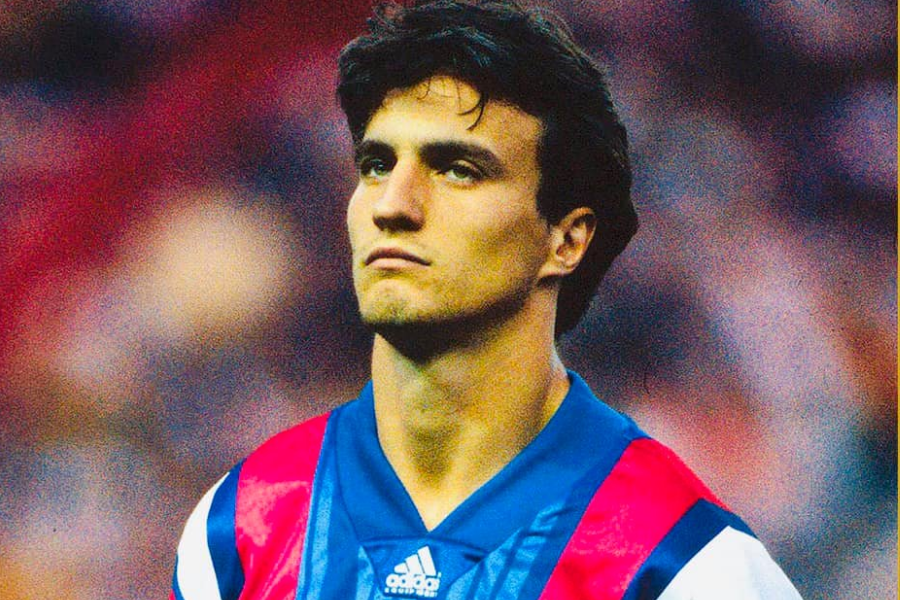
Ginola starred in England’s Premier League and for France, known for his flowing hair, mesmerizing dribbling, and magnetic screen presence.
A literal model during and after his playing career, Ginola blended football elegance with Mediterranean allure.
He embodied ‘90s football chic—passion, power, and unfiltered charisma poured into one of the sport’s most photogenic figures.
64. Patrick Sharp – Ice Hockey, Canada
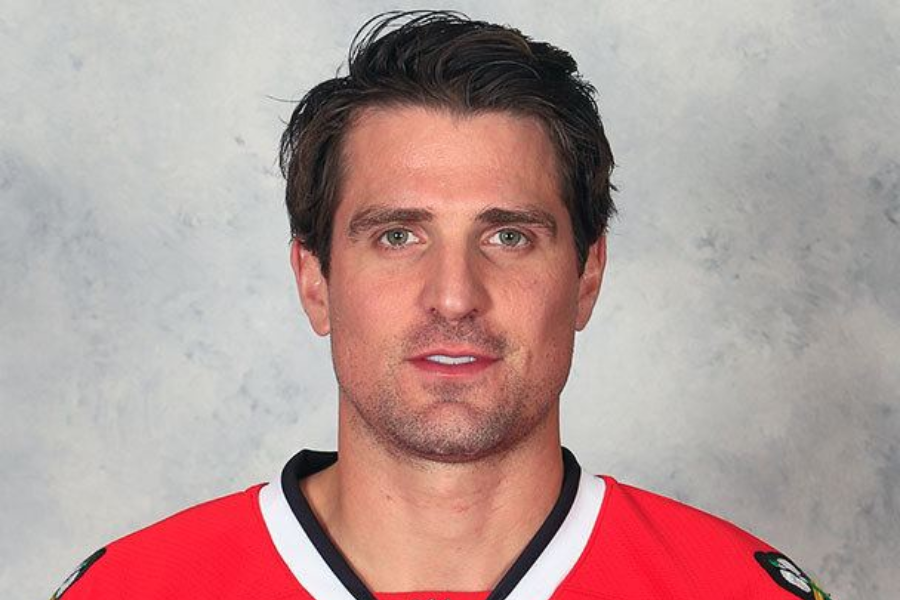
A three-time Stanley Cup champion with the Chicago Blackhawks, Sharp was beloved for his clutch play and team-first leadership.
His piercing eyes, classic profile, and rugged masculinity made him hockey’s unofficial ambassador of handsomeness.
After retirement, he seamlessly joined TV as an analyst—still just as sharp-looking in suits as he was in skates.
63. Carlos Alcaraz – Tennis, Spain

Alcaraz made history by winning the U.S. Open and Wimbledon as a teen, showcasing insane athleticism, composure, and power.
His dazzling smile, expressive face, and youthful energy captured hearts worldwide from his very first appearance.
With a blend of boyish charm and alpha confidence, Alcaraz is already tennis’s next superstar—and a modern crush in motion.
62. Gabriel Batistuta – Soccer, Argentina
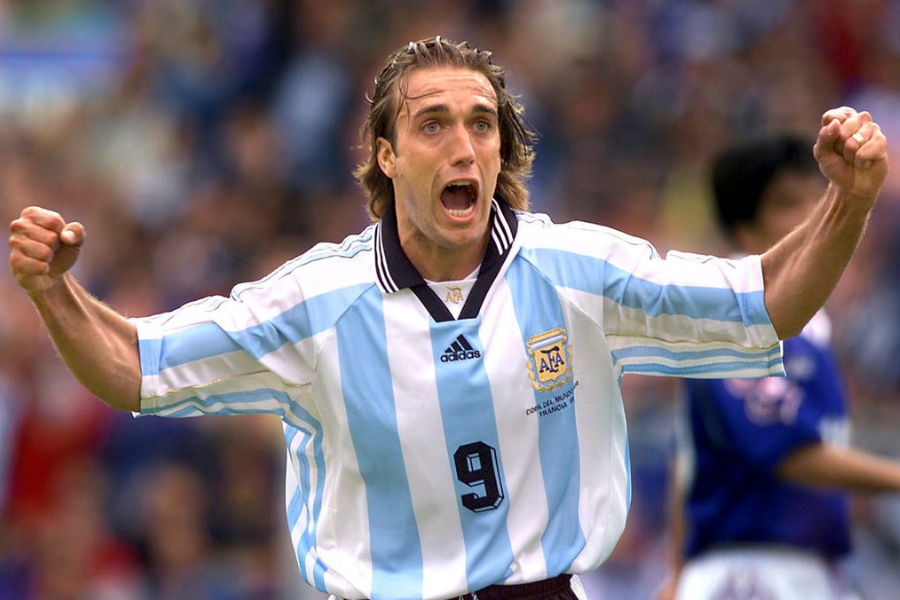
Known as “Batigol,” Batistuta was Argentina’s all-time top scorer for years, leading Fiorentina and Roma with thunderous strikes and gladiator-like presence in the ’90s and early 2000s.
With long hair, chiseled features, and a brooding intensity, he looked like a Renaissance painting in motion—powerful, poetic, and devastatingly photogenic.
Batistuta wasn’t just a goal machine—he was a symbol of rugged beauty and fierce loyalty, still idolized for both his talent and smoldering aura.
61. Marco van Basten – Soccer, Netherlands
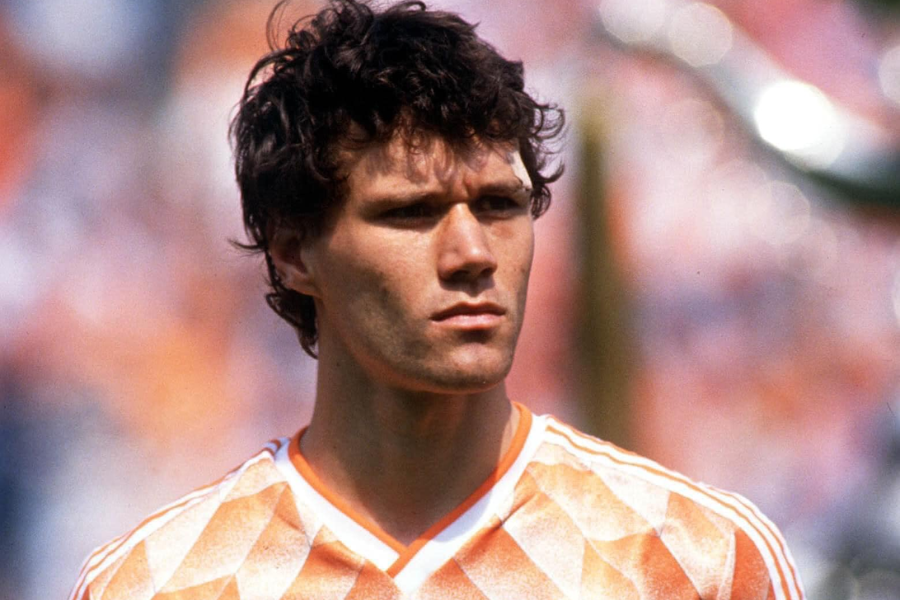
One of the most elegant strikers in football history, Van Basten won the Ballon d’Or three times and led the Netherlands to Euro 1988 glory.
With classic Dutch features, refined cheekbones, and a thoughtful, almost royal presence, he looked like a fashion editorial in every post-match shot.
Injuries cut his career short, but his legacy lives on—as both a footballing genius and one of the most quietly handsome icons of his era.
60. Armand Duplantis – Pole Vault, Sweden/USA

Number 60 belongs to Armand Duplantis. Duplantis shattered pole vault records on both sides of the Atlantic, winning Olympic gold and multiple world titles while making the impossible look effortless.
With soft curls, luminous eyes, and a boyish smile, Mondo radiates youthful energy and Scandinavian charm—equal parts golden retriever and Greek god.
Whether airborne in stadiums or posing for fashion spreads, Duplantis blends world-record confidence with sweet, striking beauty that makes him unforgettable mid-flight and on the ground.
59. Patricio “Pitbull” Freire – MMA, Brazil

A dominant force in Bellator MMA, Pitbull Freire has claimed titles in multiple weight classes and become a symbol of Brazilian fighting spirit.
His rugged jaw, steely glare, and compact, muscular build give him a fierce and commanding aura.
Despite his nickname, Pitbull is grounded and humble—balancing his fearsome presence with family values and a quiet, captivating charm.
58. James Rodríguez – Soccer, Colombia

Rodríguez burst onto the world stage at the 2014 World Cup, winning the Golden Boot and becoming an instant superstar.
With striking hazel eyes, a glowing complexion, and perfectly groomed hair, he quickly earned heartthrob status worldwide.
His soft-spoken nature and relaxed charisma make him a standout not just for goals, but for his glowing, graceful presence.
57. Andre Agassi – Tennis, USA
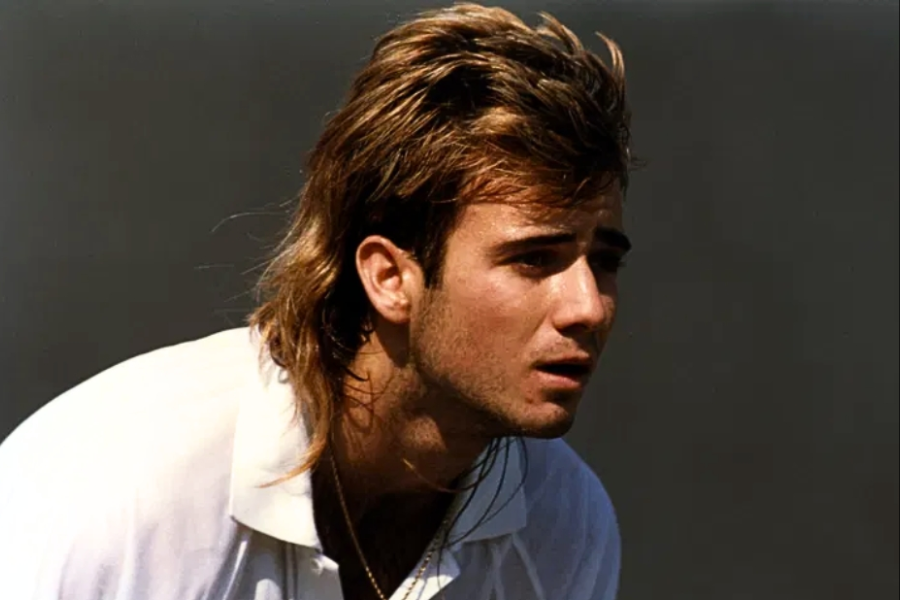
In the late ’80s and early ’90s, Agassi exploded onto the tennis scene with a rebel persona, flamboyant style, and a thunderous return game.
With flowing mullet, bold brows, and intense dark eyes, young Agassi looked like a rockstar disguised as an athlete—posing shirtless for ads and hearts alike.
Long before the shaved head and Grand Slam legacy, it was that bad-boy charisma and cover-worthy beauty that made him tennis’s first true sex symbol.
56. Odell Beckham Jr. – Football, USA

OBJ became one of the NFL’s most recognizable figures, known for impossible catches, high-speed flair, and game-breaking plays.
His chiseled physique, expressive eyes, and daring haircuts made him a trendsetter in both sports and fashion.
Beckham oozes charisma, equally captivating on the red carpet or sideline—always unpredictable, always impossible to ignore.
55. Ayrton Senna – Formula 1, Brazil
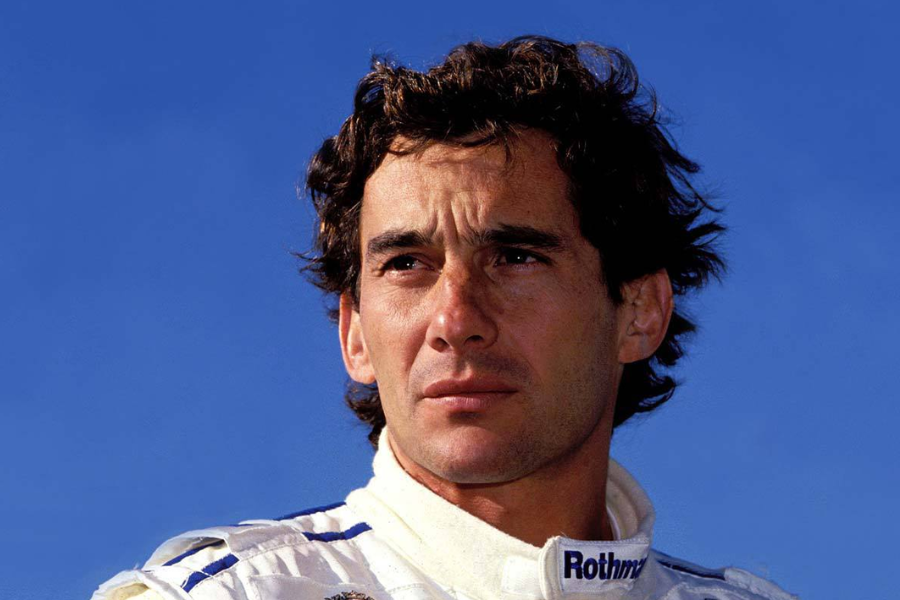
Senna was a three-time Formula 1 World Champion and a national hero in Brazil, revered for his rain-drenched brilliance and fearless racing style.
With hypnotic eyes, sharp features, and a quiet, soulful intensity, Senna’s elegance extended far beyond the cockpit—he looked like a film star in racing gear.
His tragic death at Imola in 1994 stunned the world, but his legacy endures—an eternal symbol of beauty, brilliance, and the poetic fragility of greatness.
54. Danell Leyva – Gymnastics, USA
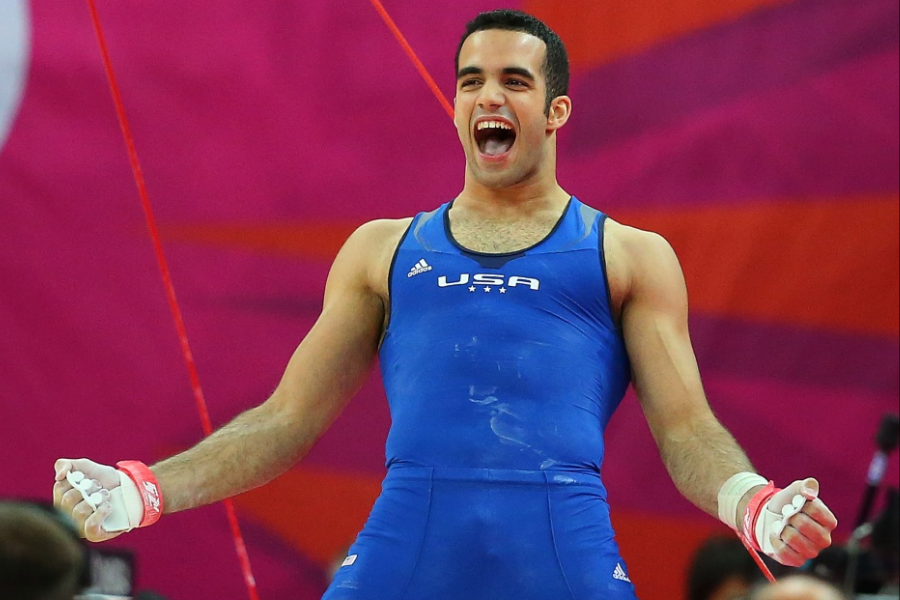
A three-time Olympic medalist, Danell Leyva dazzled fans with high bar brilliance and sharp floor routines, helping redefine U.S. men’s gymnastics in the 2010s.
With striking brows, smooth skin, and a glowing complexion, Leyva stood out for both his athletic grace and red-carpet-ready looks.
His confidence, creativity, and openness—particularly after coming out as bisexual—cemented him as a modern icon of strength, beauty, and authenticity.
53. Olivier Giroud – Soccer, France

A World Cup champion and longtime French international, Giroud has scored for elite clubs like Arsenal, Chelsea, and AC Milan with consistent poise and power.
His model-like bone structure, ice-blue eyes, and smoldering beard earned him global recognition far beyond football pitches.
Giroud exudes sophistication—balancing warrior mentality on the field with designer suits, magazine covers, and gentlemanly charm off it.
52. Aaron Rodgers – Football, USA
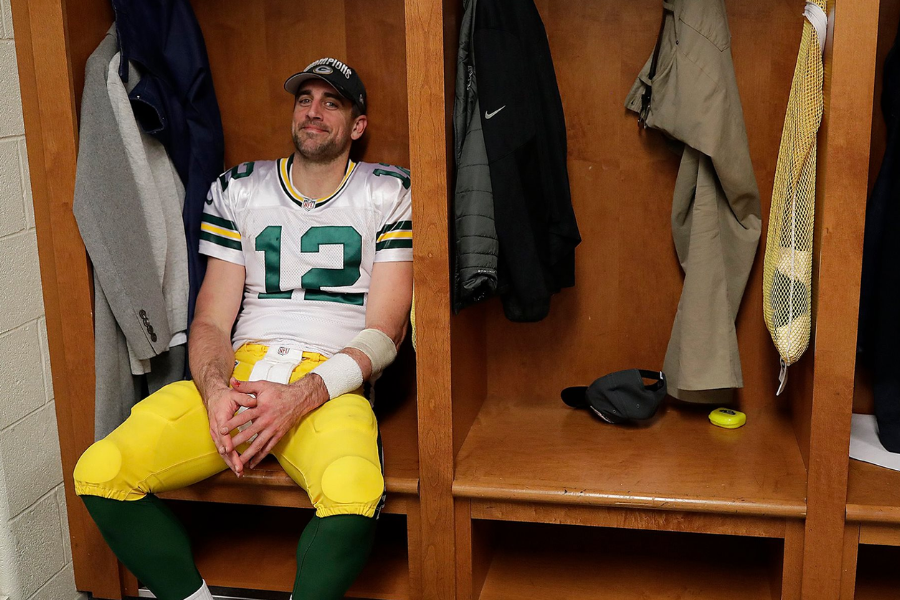
Rodgers is a Super Bowl champion and four-time MVP who redefined the quarterback position with intelligence, precision, and signature deep-ball mastery.
His rugged good looks, piercing eyes, and rugged stubble have made him a consistent fixture in “most handsome athlete” lists for years.
Despite media storms and personal evolutions, Rodgers maintains an aura of mystery, depth, and undeniable charisma that keeps fans and critics intrigued.
51. Marat Safin – Tennis, Russia
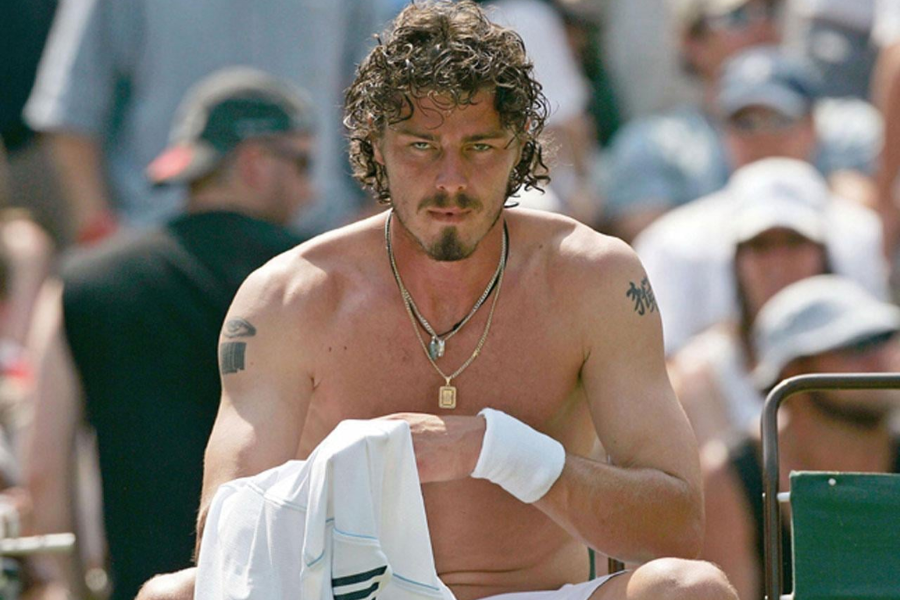
A former world number one and two-time Grand Slam champion, Safin was known for explosive shot-making and unpredictable brilliance throughout the 2000s.
At 6’4″, with dark hair, hypnotic eyes, and unfiltered confidence, Safin became a fan favorite and global tennis crush.
His brooding charm, emotional flair, and off-court rebelliousness made him one of the sport’s most captivating—and devastatingly handsome—figures.
50. Zinedine Zidane – Soccer, France
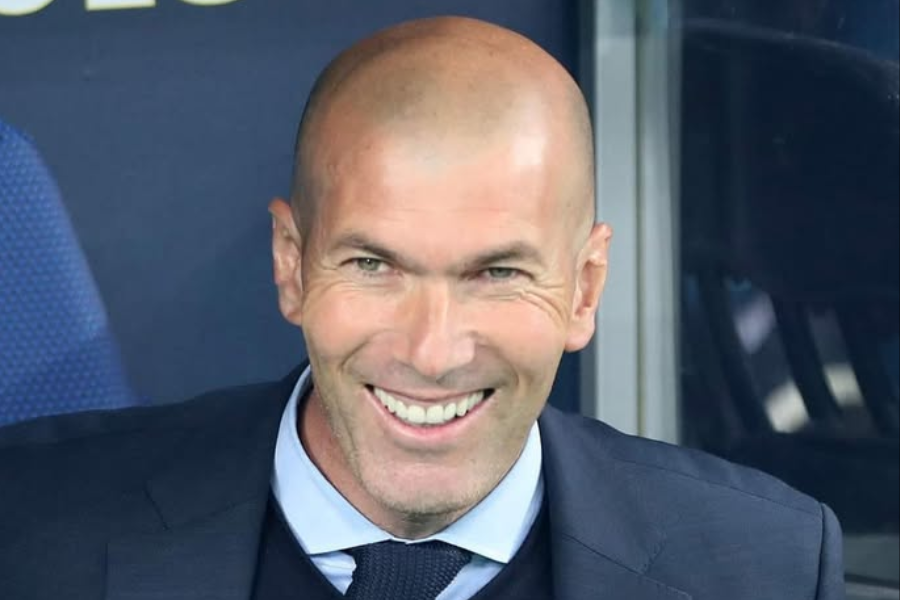
At 50 we have the iconic Zinedina Zidan. Zidane won the World Cup, the Champions League, and the Ballon d’Or, becoming one of the most elegant and decisive midfielders in football history.
With a statuesque frame, razor-sharp bone structure, and intense stare, Zidane exuded mystique—equal parts gladiator, artist, and movie villain in the best way.
His bald head became iconic, his quiet demeanor magnetic—Zizou remains a timeless blend of power, poise, and unmistakable masculine allure.
49. Luka Dončić – Basketball, Slovenia

Dončić became a European legend in his teens before joining the NBA and dominating with skill, swagger, and basketball IQ beyond his years.
With rugged charm, expressive eyes, and a cheeky grin, he brings old-soul charisma to a new era of global stardom.
He blends Eastern European cool with Dallas flair—instantly likable, endlessly watchable, and growing more dashing with every season.
48. Paolo Maldini – Soccer, Italy

Maldini was the embodiment of loyalty and elegance, spending 25 years at AC Milan, winning seven Serie A titles and five European Cups with flawless defending.
With godlike cheekbones, flowing hair, and eternal calm, he had the presence of a Roman emperor—and the jawline to match.
Whether marking legends or attending fashion galas, Maldini was—and still is—the definition of Italian perfection in both football and effortless male beauty.
47. Damian Lillard – Basketball, USA

Lillard is a clutch king, franchise cornerstone, and elite scorer who led the Portland Trail Blazers with loyalty and poise.
His sharp jawline, powerful frame, and soulful eyes made him one of the NBA’s most grounded—and best-dressed—stars.
On court or behind the mic as “Dame D.O.L.L.A,” Lillard’s confidence, honesty, and stylish masculinity are pure charisma.
46. Carlos Sainz Jr. – Formula 1, Spain

Sainz Jr. carved out his own legacy in Formula 1, racing for Toro Rosso, McLaren, and now Ferrari with grit, strategy, and Spanish finesse.
With classic Mediterranean features, warm brown eyes, and that tousled hair, he exudes understated charm behind the wheel and pure GQ energy out of it.
Whether in race gear or tuxedos, Sainz balances fiery competitiveness with graceful confidence—Formula 1’s golden boy of focus, fashion, and undeniable handsomeness.
45. Freddie Ljungberg – Soccer, Sweden
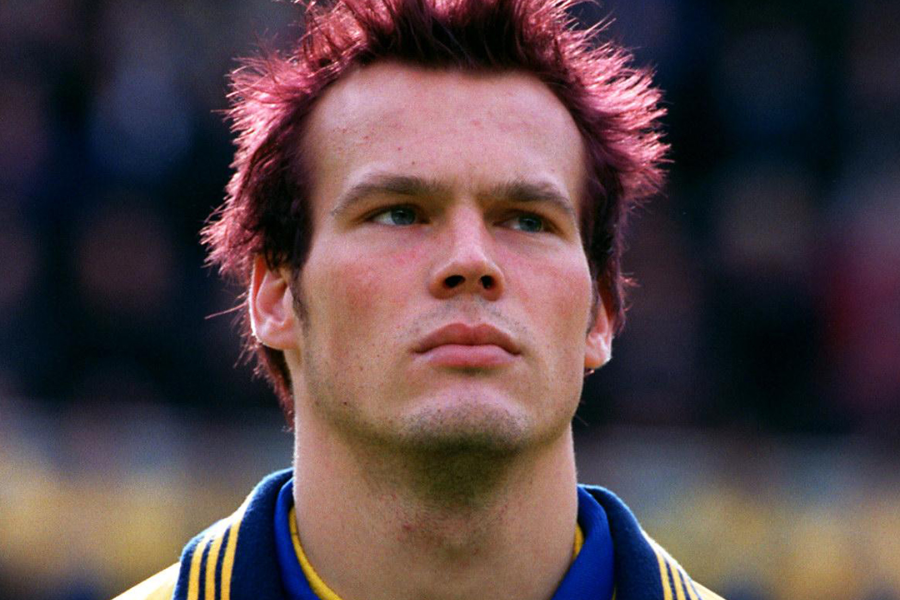
Ljungberg was a Premier League star with Arsenal and a Sweden international known for attacking flair, fearless confidence, and some of Calvin Klein’s most iconic underwear ads.
With a sculpted jawline, blazing red faux-hawk, and a tattooed, rebellious edge, he became one of football’s most unmistakable faces of the early 2000s.
His bold, edgy look made him more than just a player—he was a fashion-forward icon, blending raw athletic energy with effortless, high-fashion cool.
44. Caeleb Dressel – Swimming, USA

Dressel took over from Phelps as America’s new swim star, winning seven Olympic golds and smashing multiple world records in sprint events.
His wide shoulders, defined torso, and all-American smile made him a dominant force both in the water and on magazine covers.
With a calm intensity and clean-cut appeal, Dressel became the modern face of competitive swimming—and undeniable poster material.
43. Raúl González – Soccer, Spain
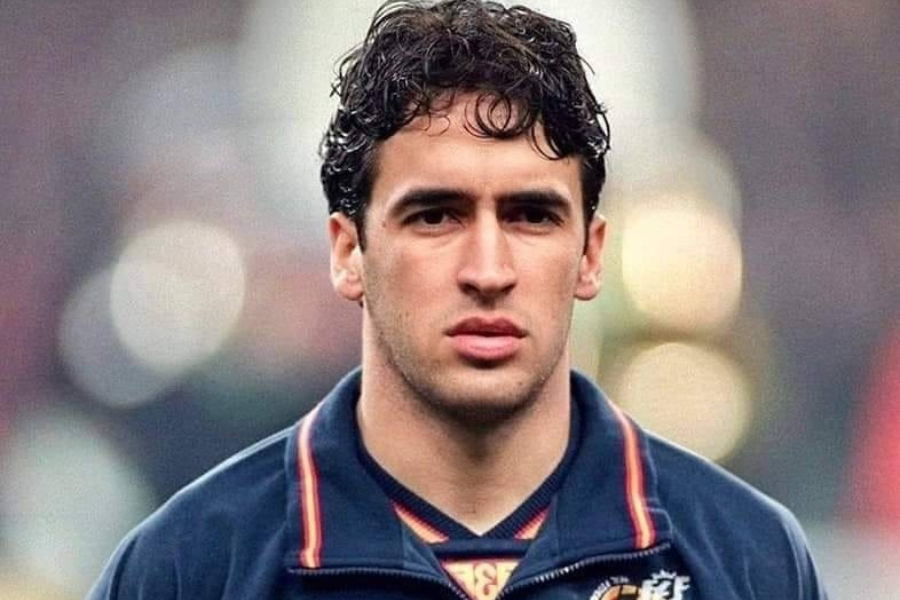
Raúl captained Real Madrid during one of its most dominant eras, winning La Liga, Champions League titles, and scoring over 300 career goals.
With his intense gaze, prominent cheekbones, and gentlemanly aura, he was the embodiment of classic Spanish elegance.
Raúl combined loyalty, leadership, and low-key good looks to become a cultural symbol for Real fans and romantics alike.
42. Jude Bellingham – Soccer, England

Bellingham broke through as a teenager at Birmingham, then lit up Borussia Dortmund and now dominates Real Madrid’s midfield with maturity far beyond his years.
With expressive brown eyes, sculpted features, and a powerful presence, Jude combines natural handsomeness with poise that feels royal in every stadium he steps into.
From tunnel walks to red carpet events, he balances fierce athleticism and polished charm—Gen Z’s football prince, already built for both legacy and the lens.
41. Fernando Alonso – Formula 1, Spain

A two-time F1 World Champion, Alonso is known for aggressive racing, technical brilliance, and one of the longest-lasting careers in modern motorsport.
His smoldering looks, five-o’clock shadow, and confident posture have made him a fan favorite around the globe.
Alonso’s off-track cool and occasional brooding mystery only enhance the allure—he’s fast, fearless, and effortlessly photogenic.
40. Gabriel Medina – Surfing, Brazil

Number 40 belongs to Gabriel Medina. A two-time World Surf League Champion, Medina became Brazil’s most celebrated surfer with aerial mastery, fierce competitive drive, and a charismatic presence in and out of the water.
With tan skin, deep brown eyes, and tousled beach hair, he brings effortless sex appeal that balances ruggedness with boyish charm.
A natural in boardshorts or designer wear, Medina’s brooding stare and confident swagger make him both a surf legend and an international style icon.
39. Kylian Mbappé – Soccer, France

A World Cup winner at just 19, Mbappé quickly became one of the most electrifying players in football with speed, precision, and record-breaking success.
With a gleaming smile, refined bone structure, and cool confidence, he’s a modern face of youth, talent, and global appeal.
Whether fronting luxury campaigns or leading PSG, Mbappé combines next-gen flair with timeless superstar looks and energy.
38. Reggie Bush – Football, USA
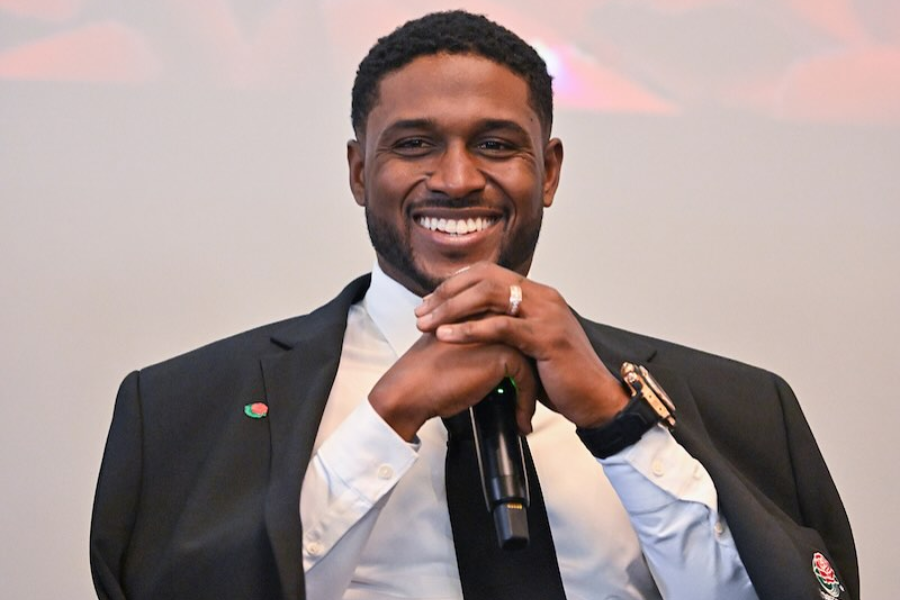
Bush electrified college football at USC and later won a Super Bowl with the Saints, known for his speed, vision, and highlight-reel agility.
With movie-star features, clean-cut style, and a dazzling smile, he became a crossover celebrity in sports and entertainment.
Bush graced magazine covers, dated A-listers, and balanced athleticism with red carpet appeal—always looking camera-ready, whether in pads or Prada.
37. Henrik Lundqvist – Ice Hockey, Sweden

The longtime Rangers goaltender, Lundqvist earned the nickname “King Henrik” for his elite play, calm demeanor, and Olympic gold with Sweden.
His slicked-back hair, chiseled jaw, and designer suits made him hockey’s most stylish man—and a staple of NYC fashion.
Few athletes combined icy focus with hot runway presence quite like him—goalie by day, GQ cover by night.
36. Devin Booker – Basketball, USA

Booker rose to NBA stardom with the Phoenix Suns, becoming a three-time All-Star and one of the league’s most lethal scorers and smoothest shooting guards.
With soft brown eyes, perfect brows, and that effortlessly chill demeanor, he brings smoldering, Gen Z cool to the hardwood—one highlight reel at a time.
Whether flexing his minimalist fashion or flashing his subtle smirk, Booker exudes quiet confidence, making him a modern-day heartthrob with certified franchise-player energy.
35. Neymar Jr. – Soccer, Brazil

Neymar is one of the most recognizable players of the 21st century, dazzling fans with skill, creativity, and flair at PSG and for Brazil.
His tattoos, bold haircuts, and cheeky smile helped redefine athlete aesthetics in the modern era—bold, playful, and headline-grabbing.
Off the pitch, Neymar’s charisma and sense of fashion made him an international trendsetter and marketing machine.
34. Greg Louganis – Diving, USA
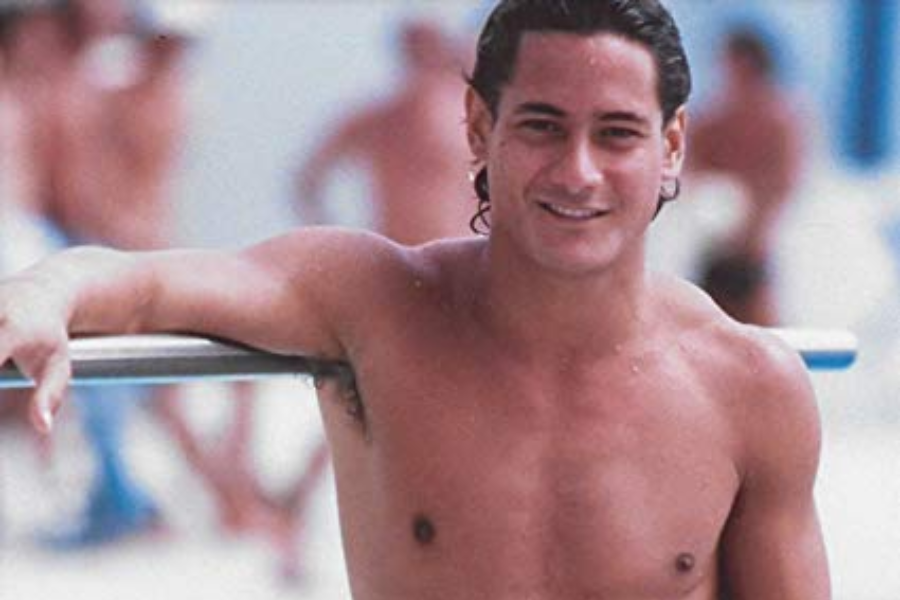
Louganis won four Olympic golds and remains arguably the greatest diver in history, revered for his precision, artistry, and courage.
His athletic grace, cinematic beauty, and quiet intensity gave him a timeless, almost sculptural elegance in motion.
As an LGBTQ+ trailblazer, he inspired millions—not only for his athletic mastery but his bravery and classic, enduring handsomeness.
33. Antoine Griezmann – Soccer, France
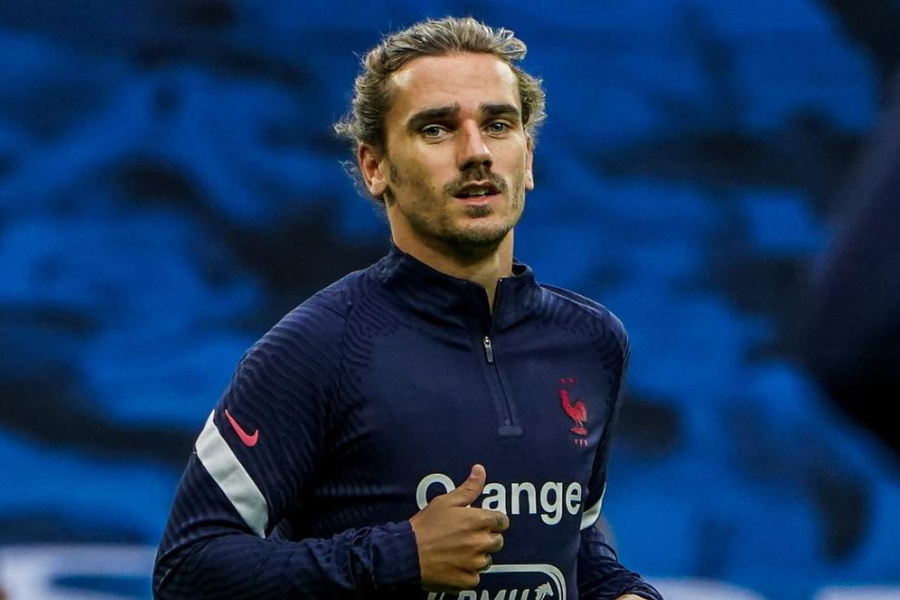
A World Cup and Nations League winner, Griezmann played key roles for France and Atletico Madrid with creativity, work rate, and goal-scoring flair.
His boy-next-door smile, tousled hair, and quirky charm made him instantly lovable and stylish.
Griezmann brings fun and flair to every moment—balancing game-day grit with lighthearted fashion-forward energy off the pitch.
32. Shohei Ohtani – Baseball, Japan

Ohtani is a generational talent who dominates as both pitcher and slugger, winning MVP honors and drawing comparisons to Babe Ruth.
With movie-ready looks, gentle eyes, and a quiet, kind demeanor, he redefines what baseball stardom can look like.
Ohtani’s humility, grace, and dual-threat excellence make him a rare blend of athletic unicorn and soft-spoken heartthrob.
31. Russell Wilson – Football, USA

Wilson led the Seattle Seahawks to a Super Bowl title and is known for his dual-threat skillset, leadership, and relentless poise under pressure.
Handsome, polished, and deeply charming, Wilson’s clean image, wide smile, and positive attitude make him as appealing off the field as on.
Now a husband, father, and businessman, his looks and charisma still make headlines—he’s the NFL’s ultimate gentleman quarterback.
30. Paulo Dybala – Soccer, Argentina

At 30 we have Paulo Dybala. Dybala dazzled for Juventus and Roma with creative dribbling, smooth finishes, and a left foot that hypnotized Serie A defenders for years.
With boyish charm, pale green eyes, and perfect symmetry, “La Joya” (The Jewel) lives up to his nickname in both skill and beauty.
Whether in training kits or tailored suits, Dybala radiates poise—earning love from fans and fashion editors alike.
29. Jimmy Garoppolo – Football, USA
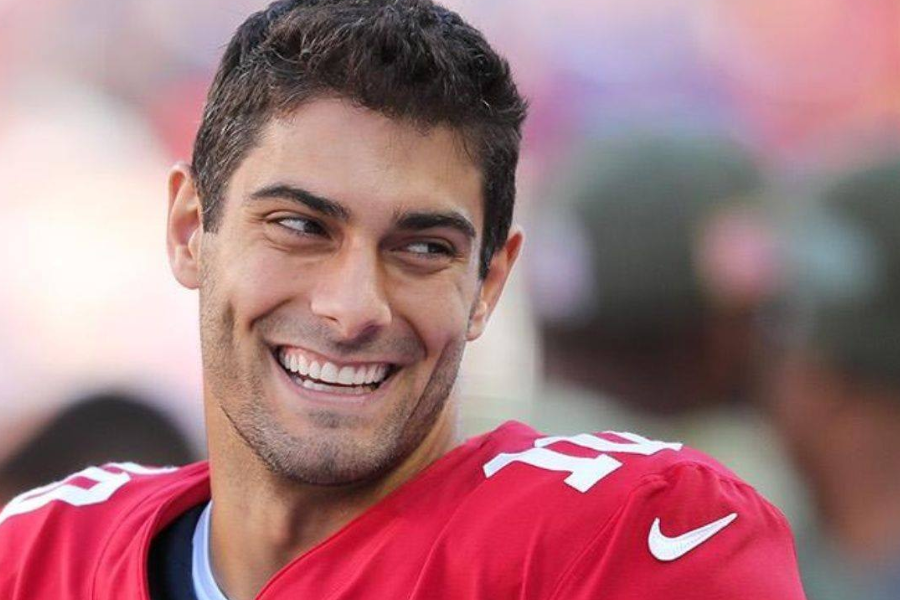
Quarterback Jimmy G quickly earned the nickname “Jimmy GQ” for his movie-star face, Italian heritage, and clean-cut good looks.
A Super Bowl starter and team leader, he combined a strong arm with effortless charm—always flashing a megawatt smile postgame.
Whether on the field or in endorsement deals, Garoppolo’s aesthetic appeal helped redefine modern football heartthrobs.
28. Roger Federer – Tennis, Switzerland
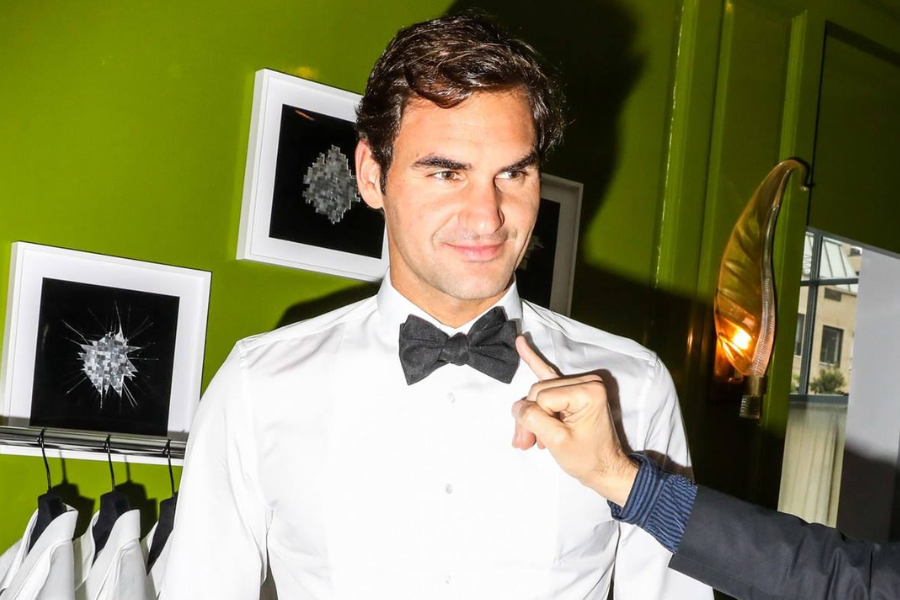
Federer won 20 Grand Slam titles with unmatched grace, earning global admiration for his elegant game, sportsmanship, and longevity across two decades of dominance.
With regal posture, sculpted features, and those calm, expressive eyes, Federer brought a timeless, European sophistication to center court—and to luxury campaigns worldwide.
Whether in a Wimbledon blazer or a crisp tux, Federer remains the epitome of refined masculinity: gracious, graceful, and impossibly photogenic from every angle.
27. James Magnussen – Swimming, Australia
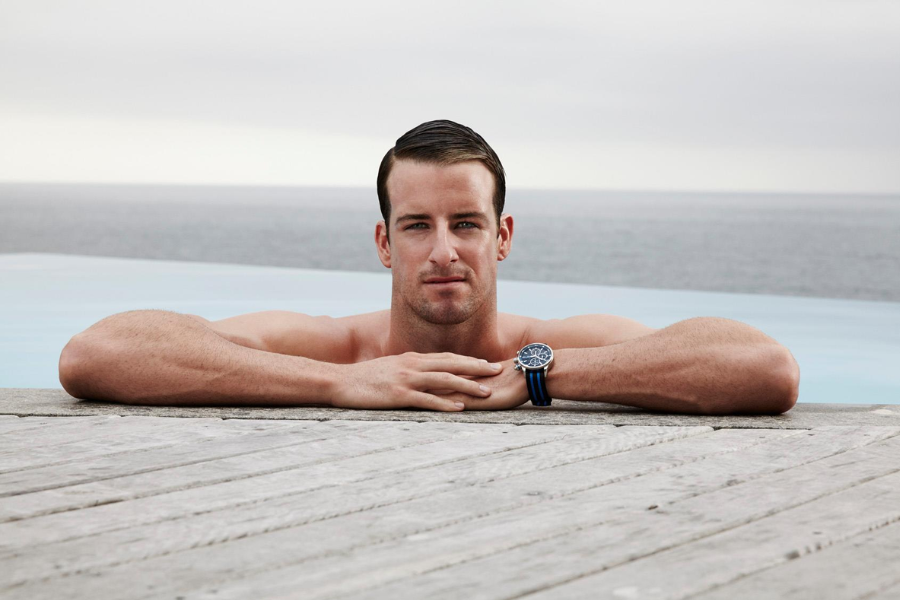
Known as “The Missile,” Magnussen was a world champion in the 100-meter freestyle, leading Australia’s resurgence in the pool during the 2010s.
His tan, towering frame, and golden-boy face turned every competition into a photoshoot waiting to happen.
A confident, clean-cut star, he graced fitness campaigns and swim covers with natural magnetism and laid-back Aussie charm.
26. Pep Guardiola – Soccer, Spain
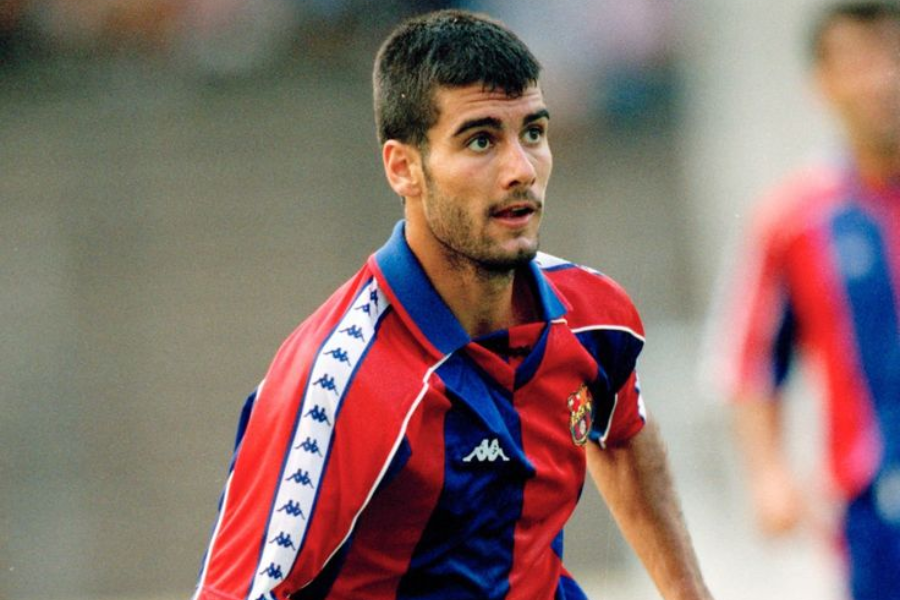
Guardiola led Barcelona to historic heights as a player and manager, revolutionizing football with his elegant tactics, vision, and relentless pursuit of perfection.
With his piercing stare, tailored suits, and clean-shaven sophistication, Pep defined the “intellectual coach” aesthetic—equal parts professor, artist, and style icon.
His silver stubble, calm confidence, and minimalist fashion sense continue to make him one of the most effortlessly handsome figures in modern sport.
25. Bryce Harper – Baseball, USA

Harper was hailed as a phenom from his teens and lived up to the hype—becoming a two-time MVP, World Series champion, and face of modern baseball swagger.
With piercing blue eyes, a strong jawline, and that signature scruffy beard, he brings a rockstar vibe to the diamond like no one else.
Whether launching home runs or fronting fashion ads, Harper blends raw intensity with leading-man looks—baseball’s blend of brawn, bravado, and undeniable beauty.
24. Novak Djokovic – Tennis, Serbia
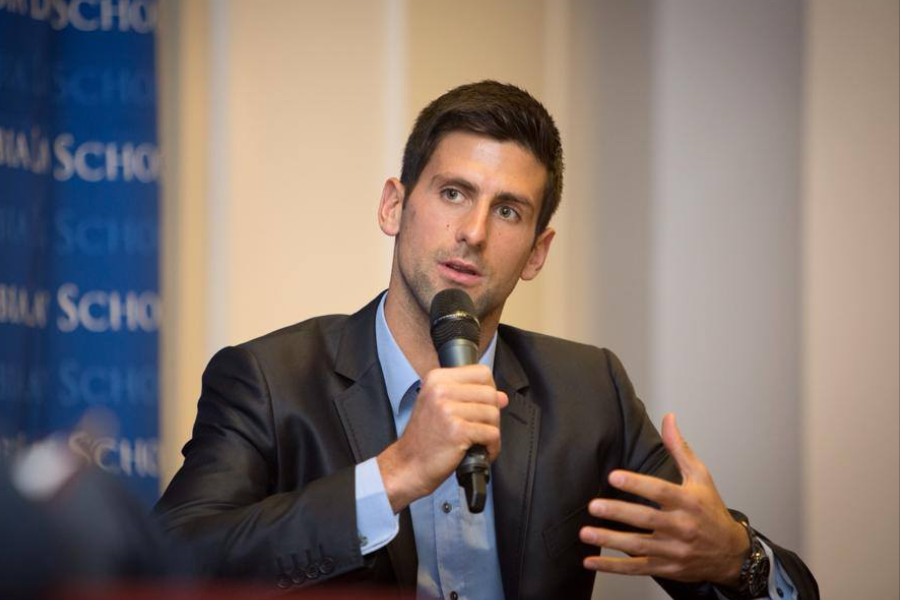
Djokovic has dominated tennis for over a decade with incredible flexibility, consistency, and an unmatched mental edge across surfaces and situations.
His symmetrical features, sharp jawline, and piercing focus create a striking presence, especially in motion.
Whether he’s winning Slams or cracking jokes in interviews, Djokovic is a captivating blend of excellence, emotion, and intensity.
23. Gerard Piqué – Soccer, Spain

A defensive icon for FC Barcelona and Spain, Piqué won every major title in football, including the World Cup and multiple Champions League trophies.
With towering height, ocean-blue eyes, and a perfectly sculpted jawline, Piqué looked like a runway model in a football kit—elegant, intense, and endlessly photogenic.
Whether commanding the back line or walking red carpets, he radiated Spanish sophistication, making him one of football’s most effortlessly handsome figures of the modern era.
22. Kaka – Soccer, Brazil

Kaká won the Ballon d’Or in 2007, dazzling for AC Milan and Brazil with elegance, speed, and divine midfield play.
With angelic features, warm eyes, and a serene smile, Kaká embodied good-boy charm like few others in football history.
He never needed tattoos or drama—his clean image, faith, and timeless beauty did all the talking on and off the pitch.
21. Joe Namath – Football, USA
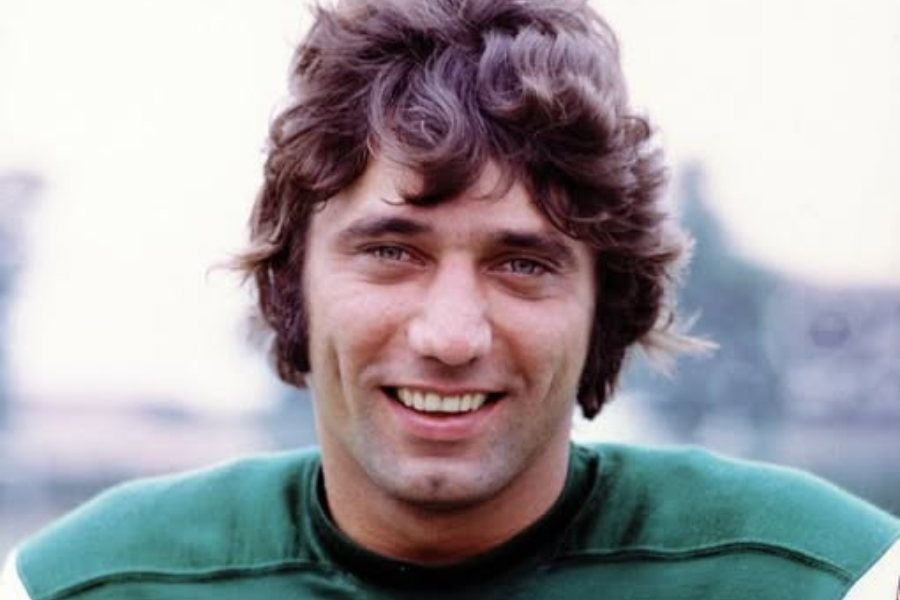
Namath became a 1960s icon, leading the New York Jets to a historic Super Bowl III win and redefining quarterback swagger.
With his fur coats, confident grin, and movie-star jawline, Broadway Joe was football’s first fashion-forward heartthrob.
Namath was vintage cool—balancing old-school charisma with a rebel streak that made him unforgettable in every way.
20. Klay Thompson – Basketball, USA

Number 20 belongs to Klay Thompson. A four-time NBA champion and one-half of the legendary Splash Brothers, Thompson built his legacy with clutch shooting, calm demeanor, and quiet intensity.
With rugged features, thick brows, and deep-set eyes, Klay carries a stoic, smoldering handsomeness that feels more brooding knight than flashy star.
Whether sailing in the Bay or suited on the sidelines, his mix of low-key charm and undeniable presence makes him effortlessly magnetic—basketball’s silent-style king.
19. Rafael Nadal – Tennis, Spain

One of the greatest tennis players of all time, Nadal’s power, intensity, and humility have brought him over 20 Grand Slam titles.
With bronzed skin, deep-set eyes, and an earthy masculinity, Rafa commands attention with every fist pump and forehand.
His blend of raw athleticism and quiet class makes him a fan favorite—and a smoldering symbol of grit and grace.
18. Anthony Edwards – Basketball, USA

Nicknamed “Ant,” Edwards became the explosive young face of the Minnesota Timberwolves, known for highlight dunks, clutch scoring, and superstar charisma well beyond his years.
With glowing skin, magnetic eyes, and a movie-worthy smile, he balances raw power with boyish charm and a naturally camera-ready presence.
Whether flexing his athleticism or stealing scenes in interviews and commercials, Edwards brings next-gen swagger and rising-heartthrob status to the NBA spotlight.
17. Xabi Alonso – Soccer, Spain

A midfield maestro for Liverpool, Real Madrid, and Spain, Alonso won multiple Champions Leagues and helped secure Spain’s Euro and World Cup titles.
With auburn hair, refined features, and piercing eyes, he exudes intellect and elegance—his stare alone could anchor a cologne campaign.
Alonso is the thinking fan’s dream: brains, beauty, and balance both on the pitch and in his effortlessly tailored wardrobe.
16. Andrea Pirlo – Soccer, Italy

The deep-lying playmaker who controlled games like a chess master, Pirlo won a World Cup, Champions League, and hearts worldwide with silent brilliance.
His flowing hair, salt-and-pepper beard, and espresso-stirring nonchalance made him the definition of cool.
Whether coaching or sipping wine, Pirlo’s calm presence and romantic aura have kept him eternally handsome in the public eye.
15. Kanoa Igarashi – Surfing, Japan
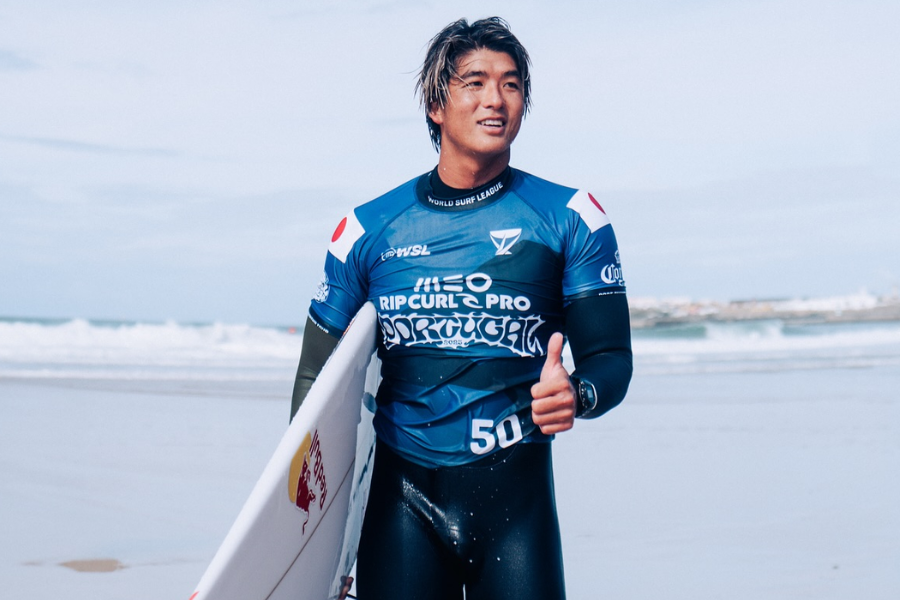
Born in California to Japanese parents, Igarashi became Japan’s top competitive surfer, winning World Surf League events and earning a silver medal at the Tokyo 2020 Olympics.
With sun-kissed skin, perfectly tousled hair, and a soulful stare, Kanoa radiates coastal cool with just the right edge of quiet confidence.
On the board or in a tailored suit, Igarashi blends East-meets-West sophistication with surfer charm—a global heartthrob riding every wave in style.
14. Tom Brady – Football, USA
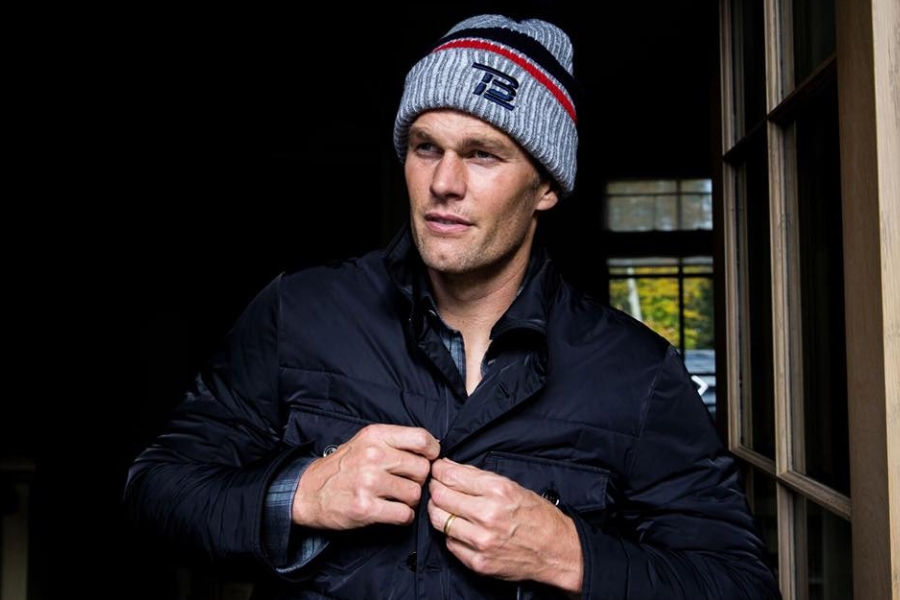
Brady won seven Super Bowls, three MVPs, and built the most successful career in NFL history—all while aging like a Hollywood lead.
His structured face, blue eyes, and poised demeanor turned him from sixth-round pick into GQ regular and global icon.
Brady’s clean image, athlete-entrepreneur lifestyle, and polished masculinity make him a timeless model of American handsome.
13. Claudio Marchisio – Soccer, Italy
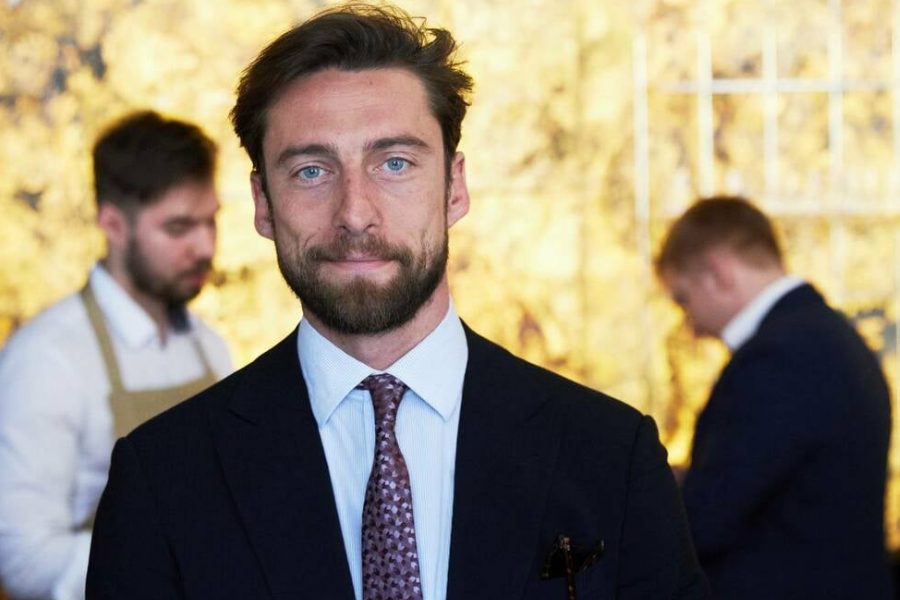
Marchisio was a midfield mainstay for Juventus during their dominant run in the 2010s, winning multiple Serie A titles and representing Italy in two major World Cups.
Nicknamed “Il Principino” (The Little Prince), he had aristocratic cheekbones, ocean-blue eyes, and that classic Mediterranean blend of masculinity and refinement.
Off the pitch, his impeccable suits, humility, and clean-cut elegance made him one of the most universally admired footballers—charming in cleats or cufflinks.
12. George Best – Soccer, Northern Ireland
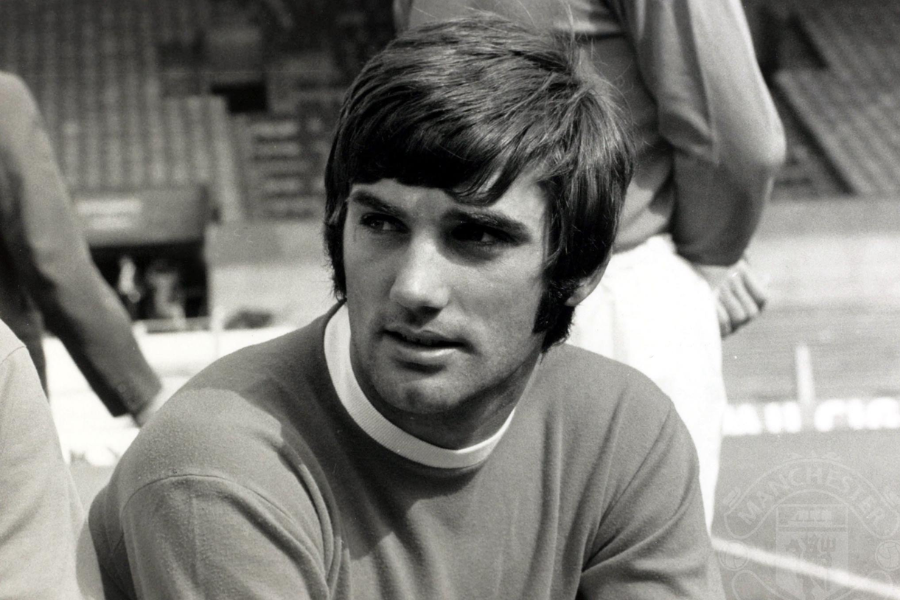
Best dazzled at Manchester United in the 1960s with magical dribbling and a flair that transcended sport—earning comparisons to rockstars and royalty alike.
With jet-black hair, long lashes, and cheekbones for days, Best looked like a Rolling Stone in football boots.
His tragic life only amplified his legend, but at his peak, he was football’s first true fashion icon.
11. Lewis Hamilton – Formula 1, United Kingdom
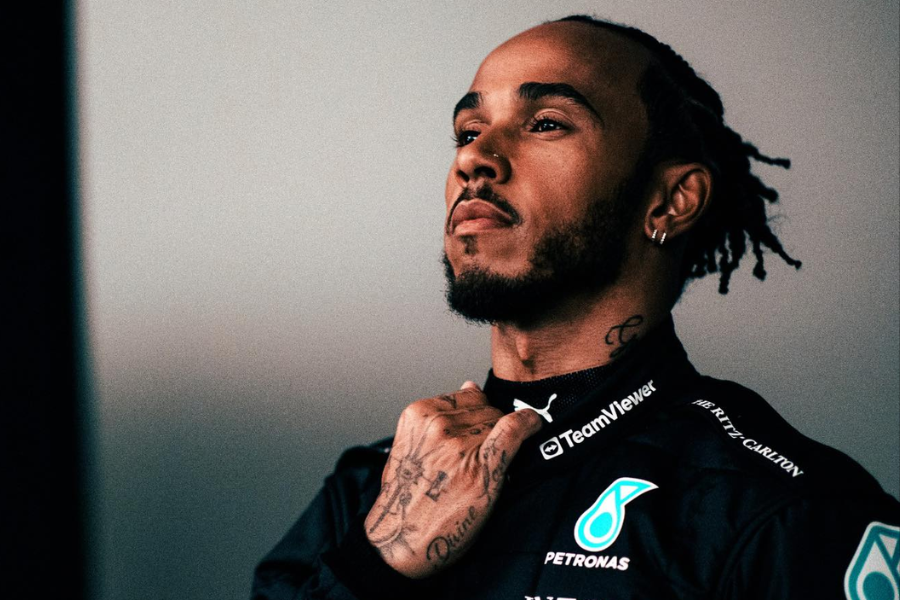
Hamilton is a seven-time world champion and F1’s most successful driver, known for redefining the sport with speed, activism, and cultural crossover.
Tattooed, stylish, and always on trend, he’s become a mainstay at fashion weeks and magazine spreads across the globe.
His ever-changing hairstyles, fearless outfits, and model-grade bone structure keep him in pole position for both speed and style.
10. Alisson Becker – Soccer, Brazil
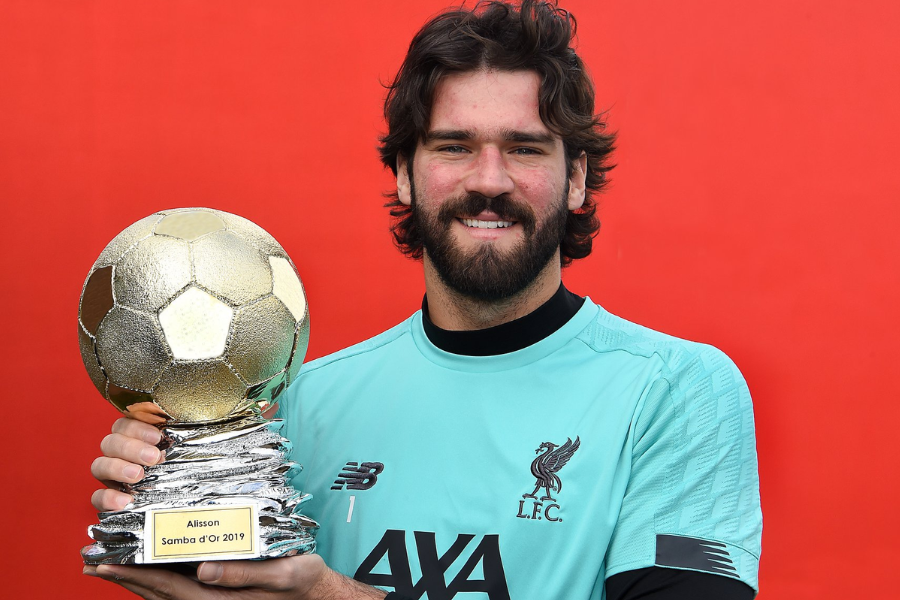
We start out top 10 with Alisson Becker. One of the best goalkeepers of his generation, Alisson helped lead Liverpool to Premier League and Champions League glory while standing tall for Brazil’s national team.
With rugged features, warm hazel eyes, and a beard that launched a thousand fan edits, he brings rugged masculinity to the goalposts.
Whether saving penalties or walking into Anfield in sharp tailoring, Alisson blends devotion, intensity, and irresistible South American charm in every appearance.
9. Leandro Paredes – Soccer, Argentina

A midfield enforcer with a velvet touch, Paredes helped lead Argentina to Copa América and World Cup glory while starring for clubs like PSG and Roma.
With piercing eyes, designer stubble, and tattooed arms, he channels South American heat and high-fashion cool in one smoldering package.
Equally at home delivering crunching tackles or strutting through team arrivals in designer fits, Paredes is a walking blend of grit and glamour.
8. Michael Jordan – Basketball, USA
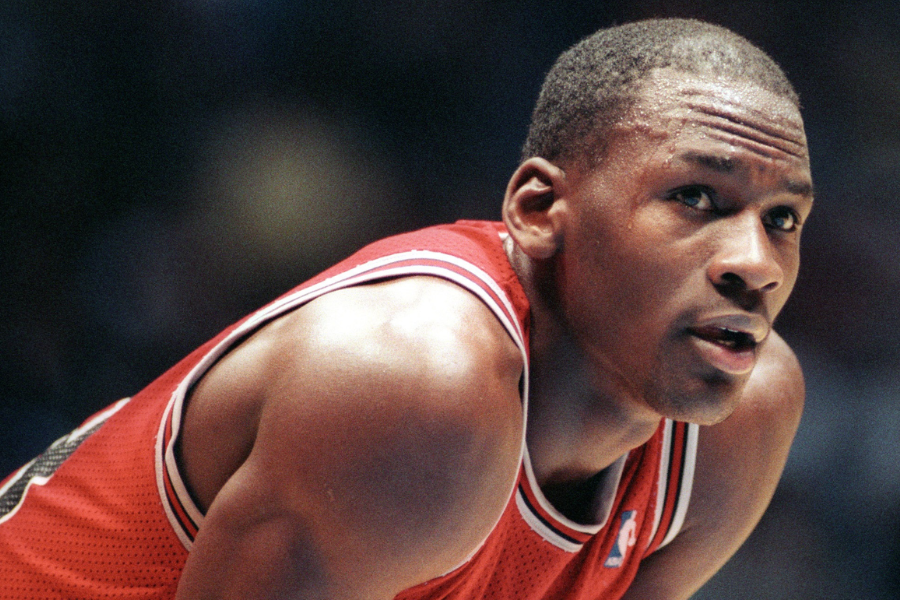
Widely regarded as the greatest basketball player of all time, Jordan won six NBA titles, five MVPs, and turned the Chicago Bulls into a dynasty.
With a statuesque frame, confident posture, and razor-sharp charisma, Jordan’s signature bald head and earring became a defining look of ’90s athletic cool.
He brought elegance to intensity—whether soaring in sneakers or suited for a press event, MJ radiated power, precision, and timeless masculine magnetism.
7. Gus Kenworthy – Freestyle Skiing, USA
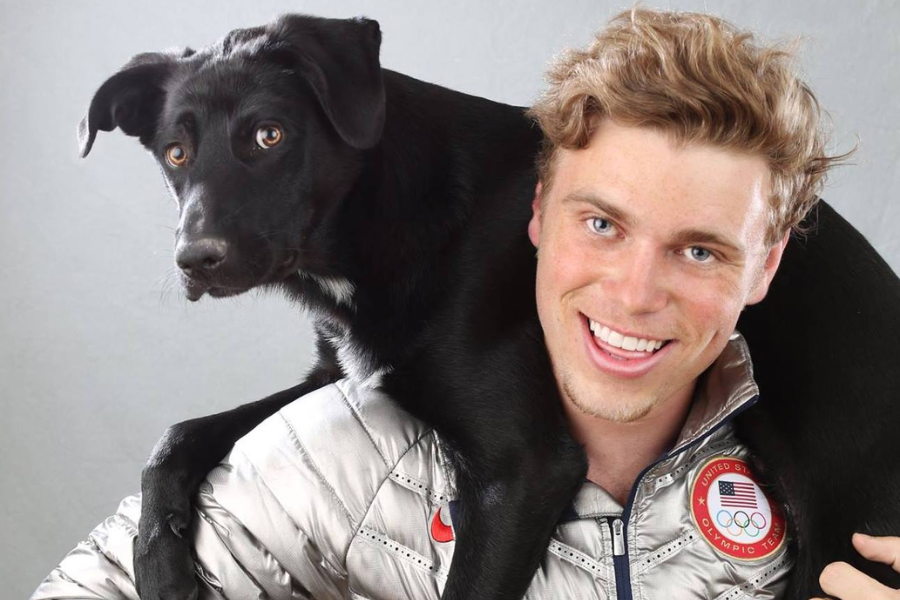
Kenworthy made history as a multi-time X Games medalist and Olympic silver medalist in slopestyle skiing, representing the U.S. and later Great Britain.
With sculpted features, expressive blue eyes, and a classically handsome frame, Gus blended rugged athleticism with Hollywood-ready looks and camera ease.
As an openly gay Olympian, he became a groundbreaking advocate for LGBTQ+ athletes—serving up visibility, charm, and fearless beauty both on the slopes and off.
6. Kelly Slater – Surfing, USA
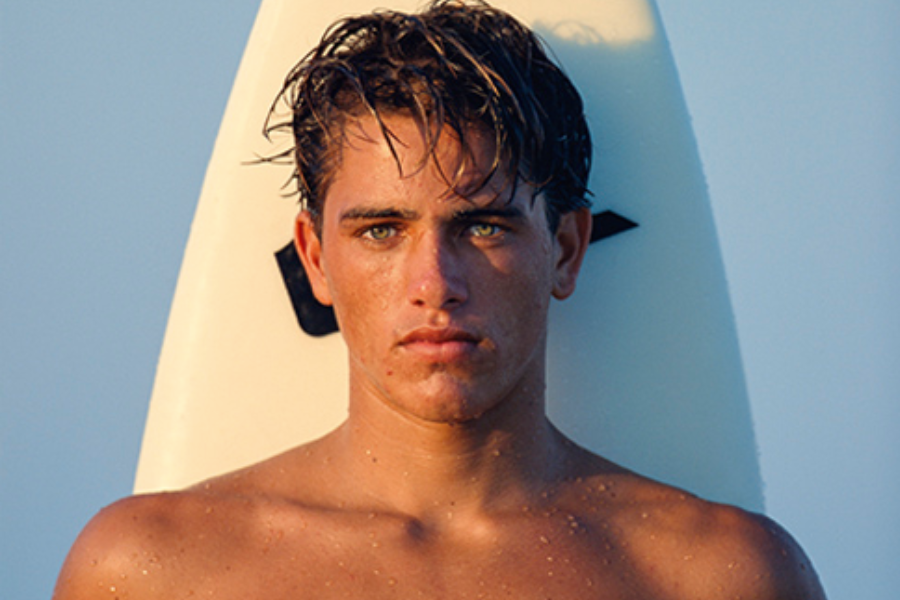
Slater is the most successful surfer in history, winning 11 world titles and redefining the sport with unmatched longevity, flow, and fearless competition.
With piercing blue eyes, sun-kissed skin, and a lean, athletic build, he became surfing’s original poster boy and the dream crush of coastal culture.
Whether carving waves or fronting fashion campaigns, Slater’s chilled charisma and timeless surfer sex appeal made him a global icon of athletic beauty.
5. Cristiano Ronaldo – Soccer, Portugal
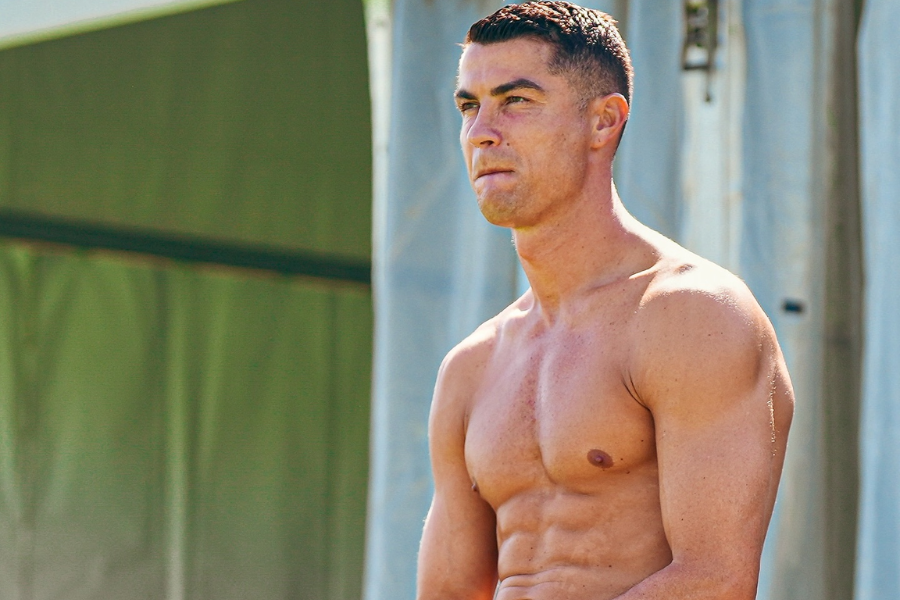
A five-time Ballon d’Or winner and global icon, Ronaldo has shattered goal records and redefined the modern football brand.
His chiseled jaw, perfect physique, and confident aura have made him a modeling powerhouse and face of dozens of fashion campaigns.
Love him or not, CR7’s elite performance and aesthetic perfection are almost inhuman—he’s the gold standard of athletic allure.
4. Ryan Lochte – Swimming, USA
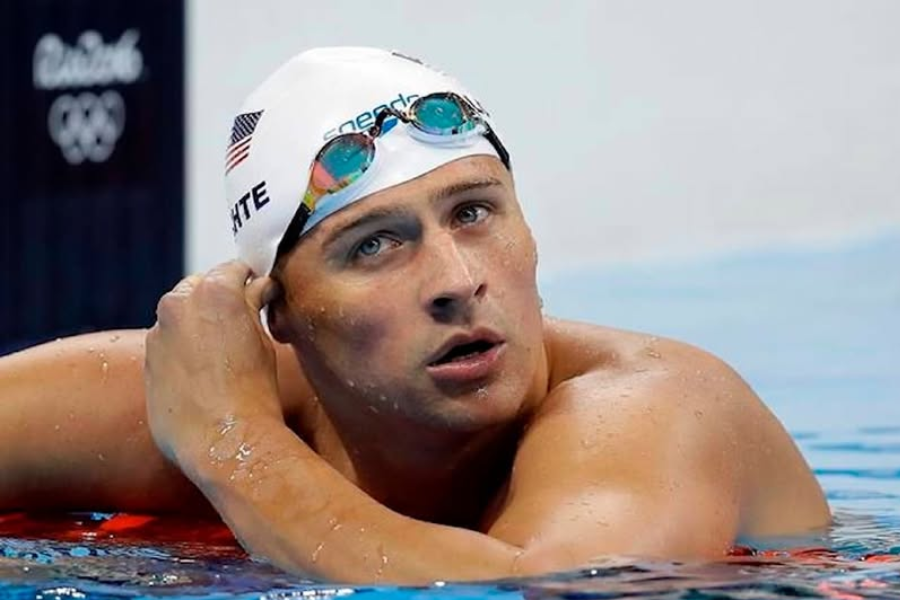
A 12-time Olympic medalist, Lochte swam in Phelps’ shadow but had leading-man looks and a surfer’s easygoing swagger.
His mischievous grin, toned physique, and beach-boy charm made him a favorite of endorsement deals and gossip columns alike.
While controversy followed, his magnetism never left—Lochte stayed a blend of golden-boy hotness and headline-making bad boy.
3. Travis Kelce – Football, USA
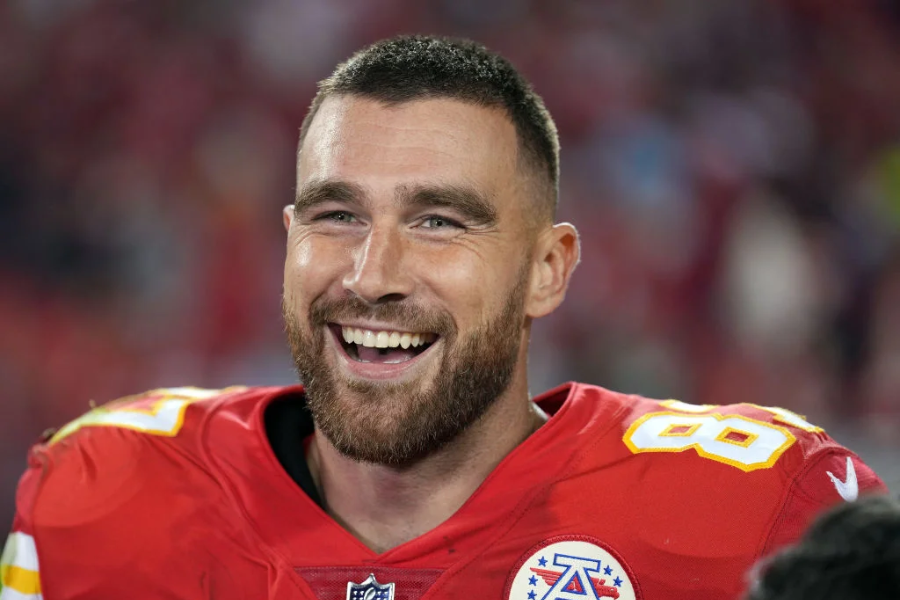
A two-time Super Bowl champion and record-breaking tight end for the Kansas City Chiefs, Kelce redefined his position with elite athleticism, finesse, and reliability.
With his clean fade, square jaw, and expressive brows, Kelce brings golden retriever energy wrapped in a gladiator’s frame—and that signature All-American grin.
Beyond the touchdowns, he’s a media darling, fashion trendsetter, and dating a global pop star—elevating him to full-blown heartthrob status on and off the field.
2. Charles Leclerc – Formula 1, Monaco

Leclerc rose through Ferrari’s ranks as a prodigy and became the face of their F1 revival, winning multiple poles and races with signature control and courage.
With high cheekbones, deep hazel eyes, and windswept Monaco glamour, he embodies Mediterranean royalty every time he steps onto the paddock.
Polite, poised, and effortlessly photogenic, Leclerc mixes gentlemanly grace with racer intensity—Formula 1’s perfect storm of speed, charm, and timeless good looks.
1. David Beckham – Soccer, United Kingdom

The number 1 spot belongs to no other than David Beckham. Beckham won league titles in England, Spain, France, and the U.S., while serving as captain of England and global ambassador for the sport.
With golden hair, high cheekbones, tattoos, and a model’s poise, Becks became a fashion icon, brand leader, and international sex symbol.
No one blended style and sport like Beckham—his look, legacy, and magnetism are still unmatched in sports history.

